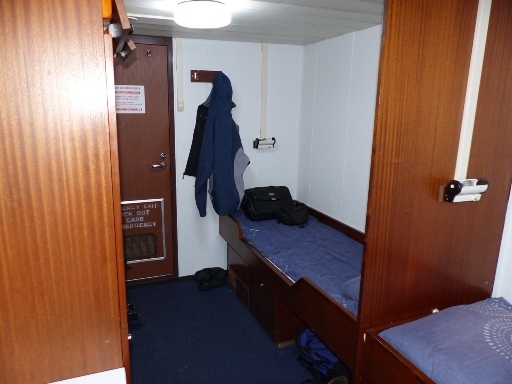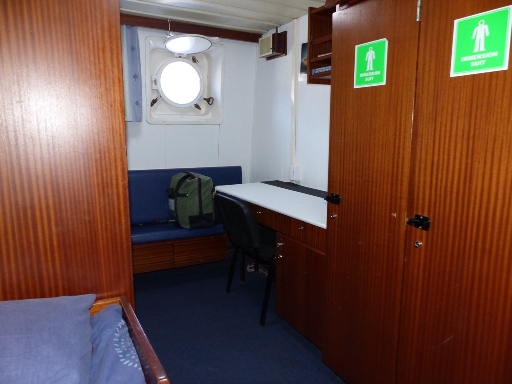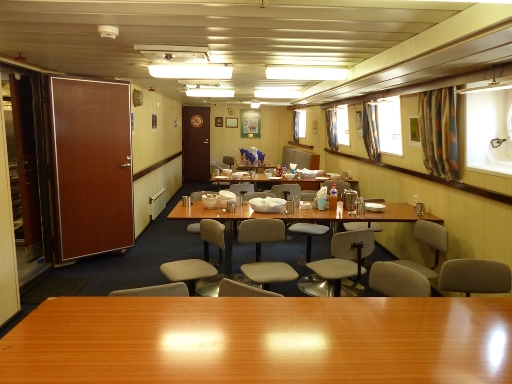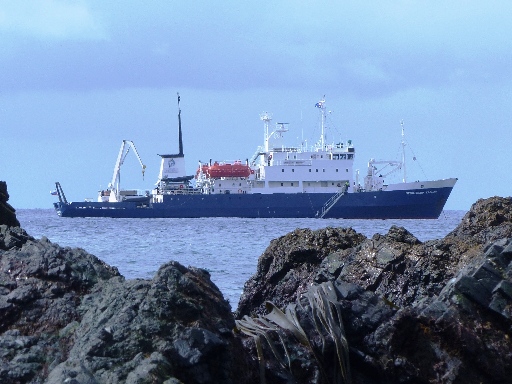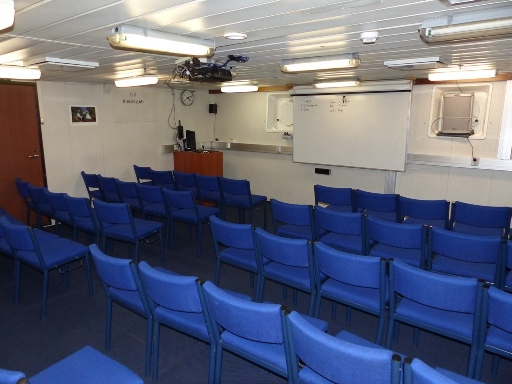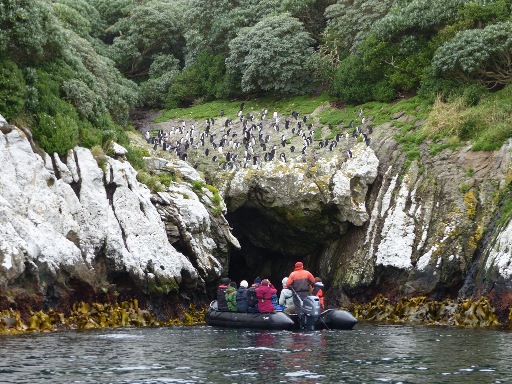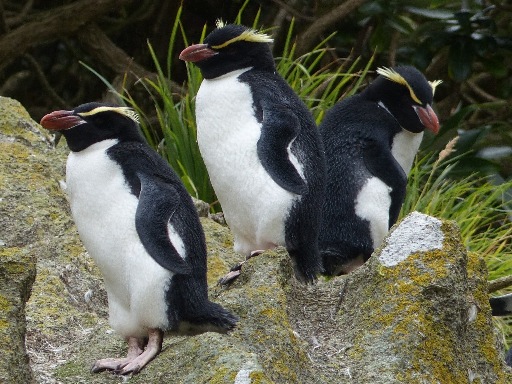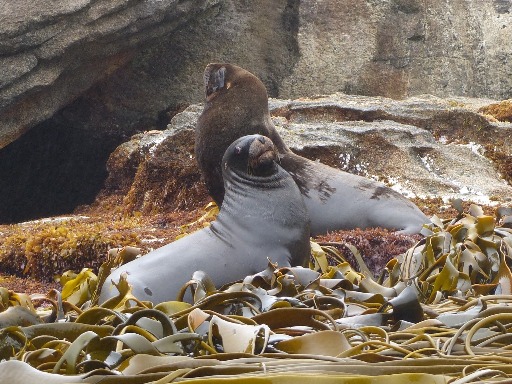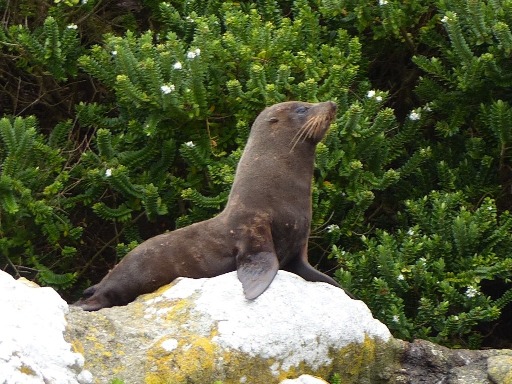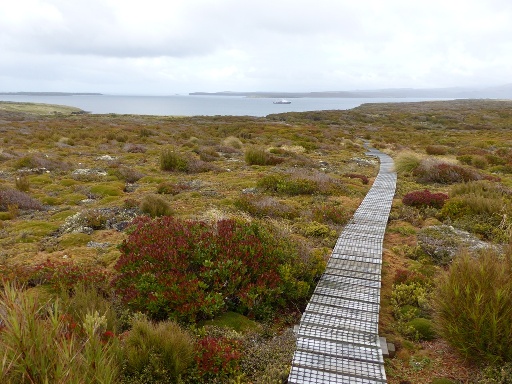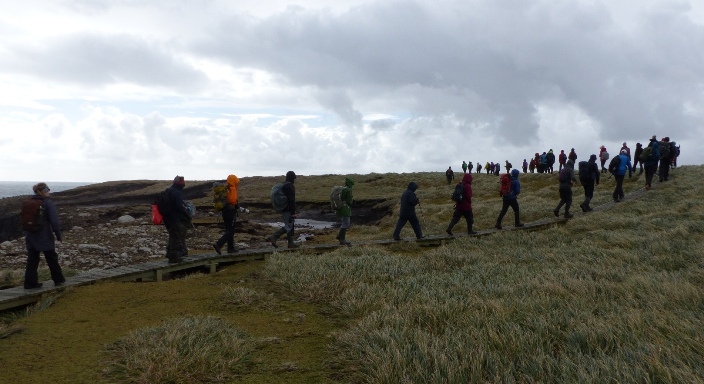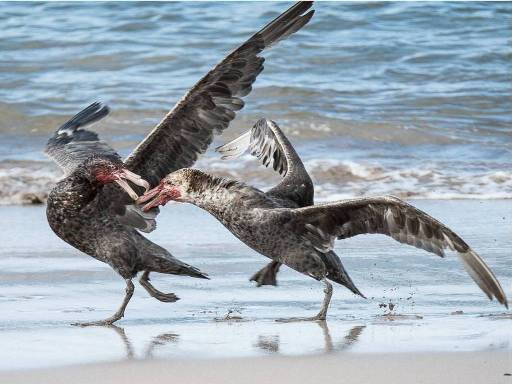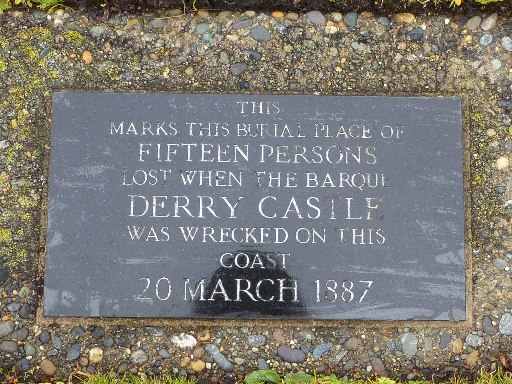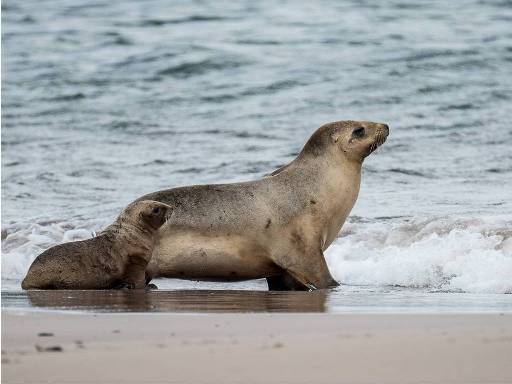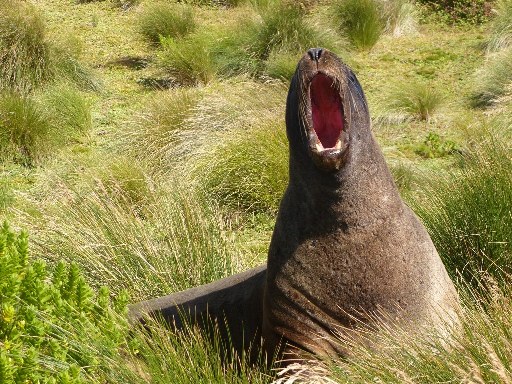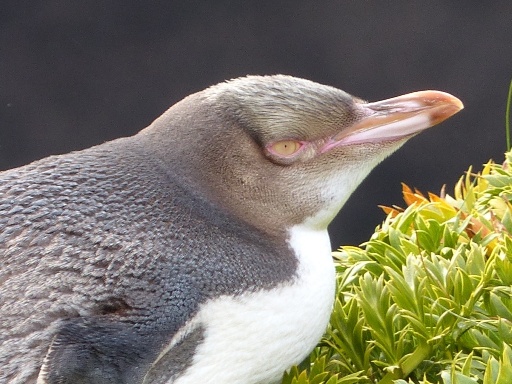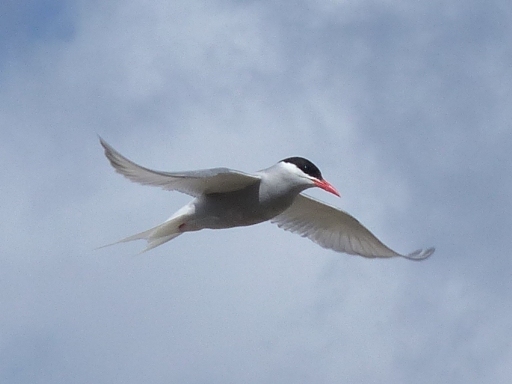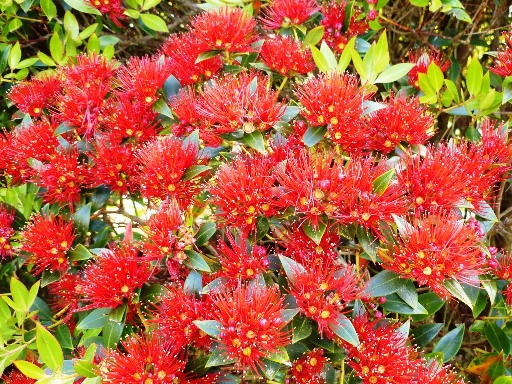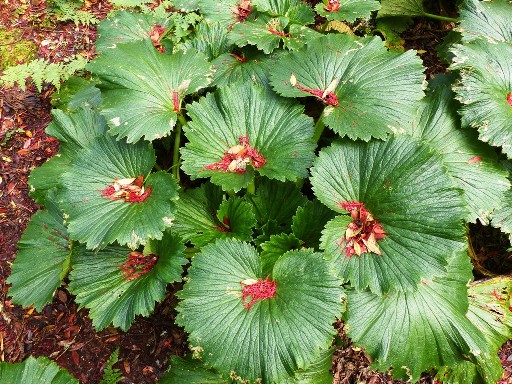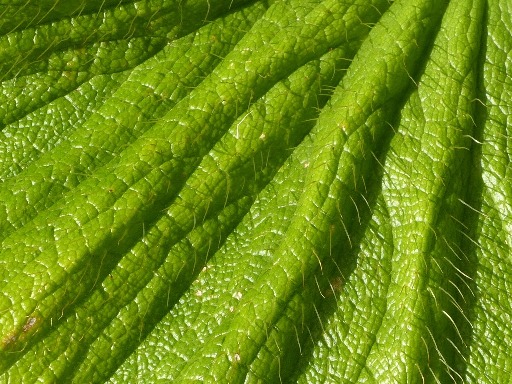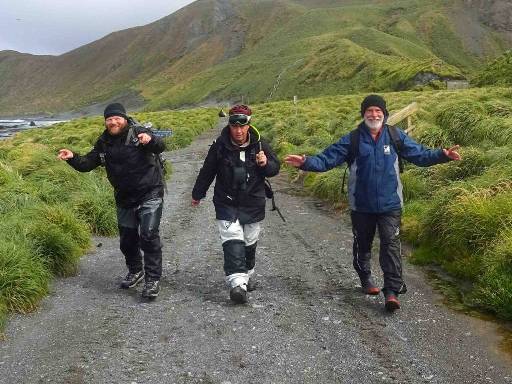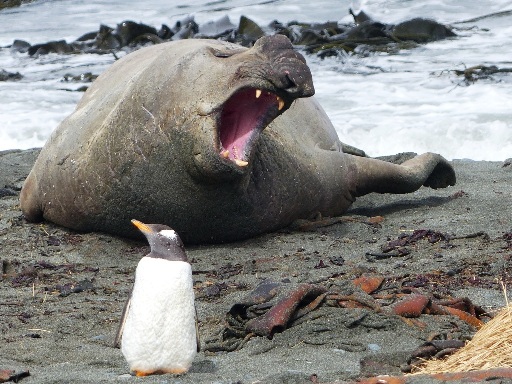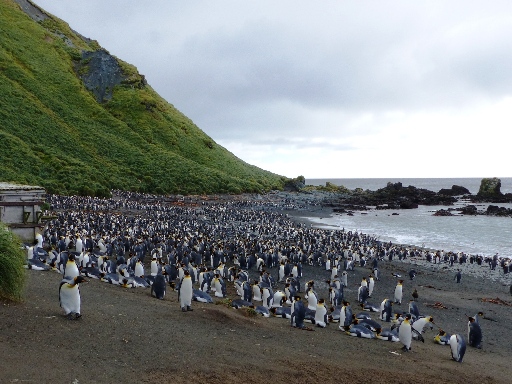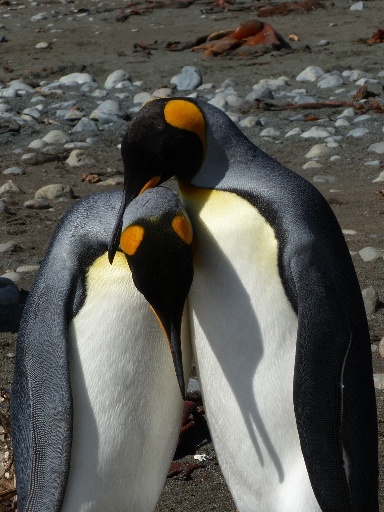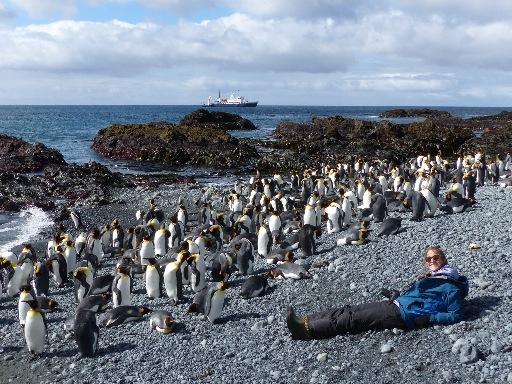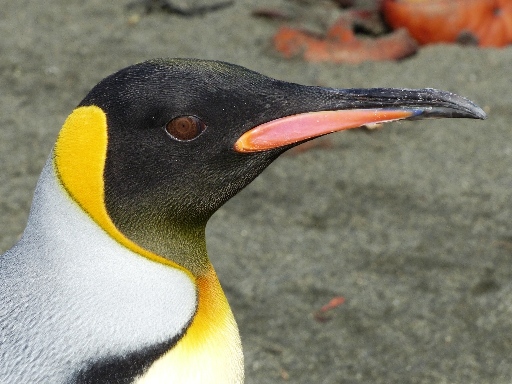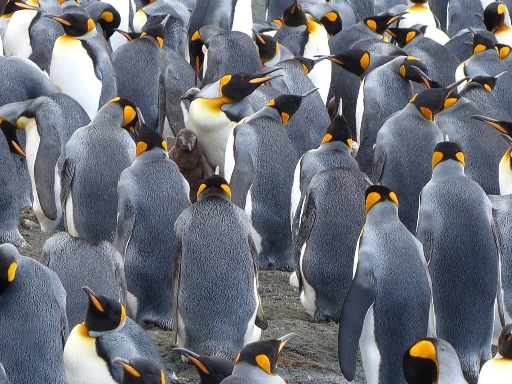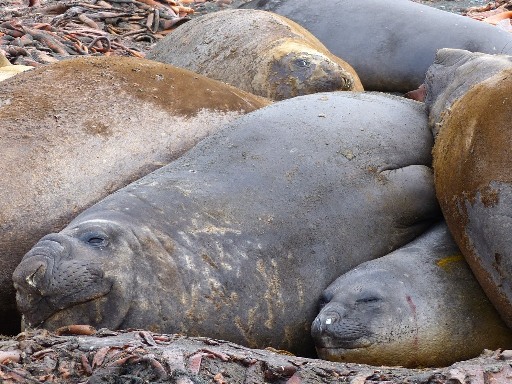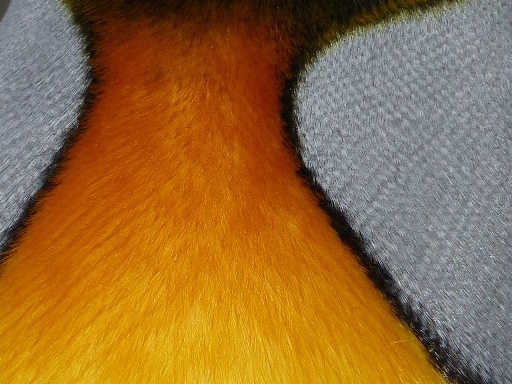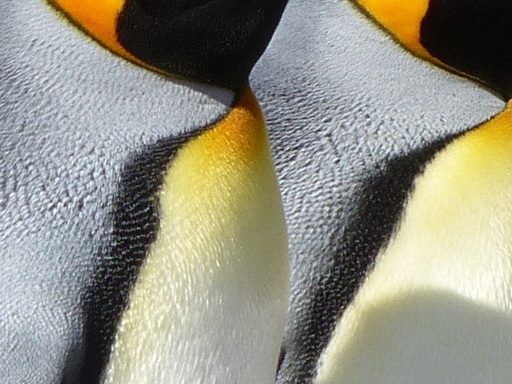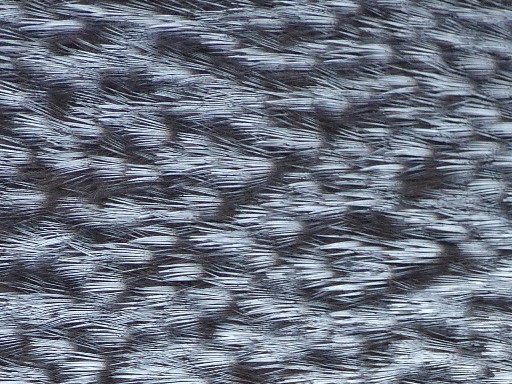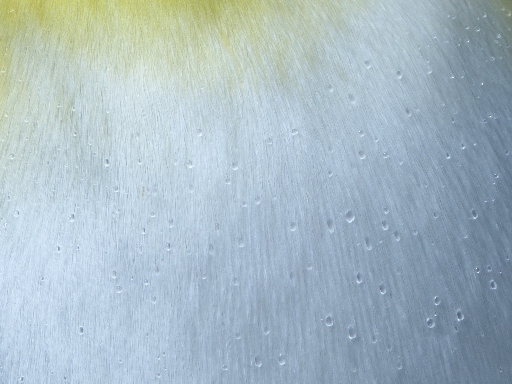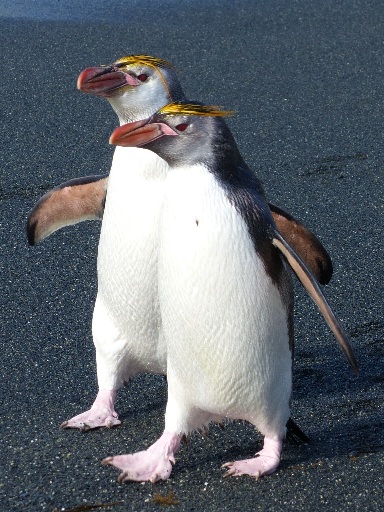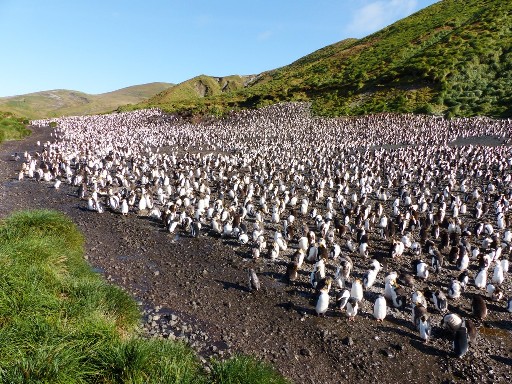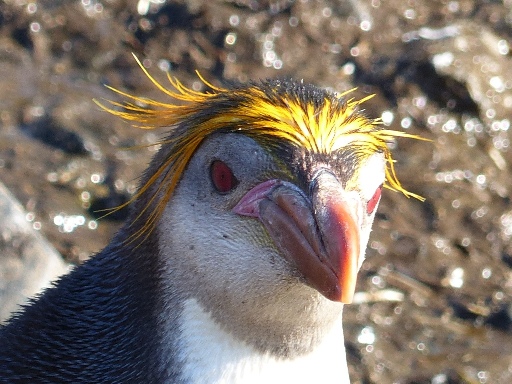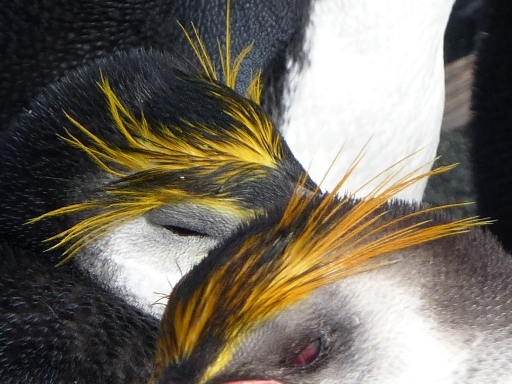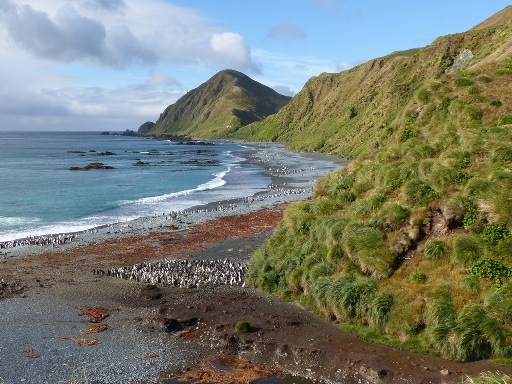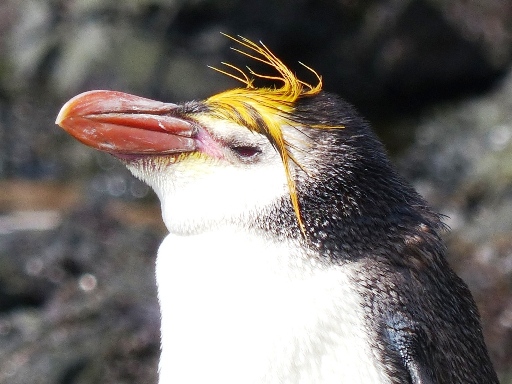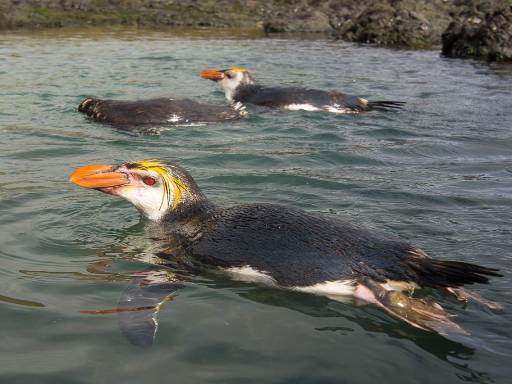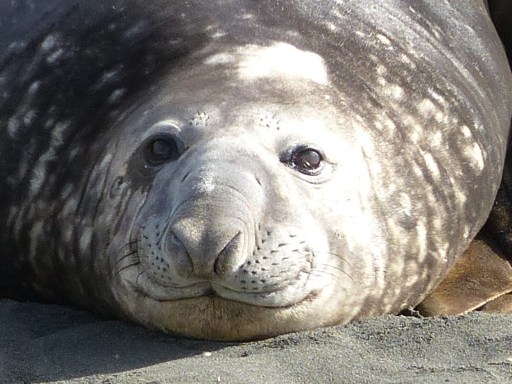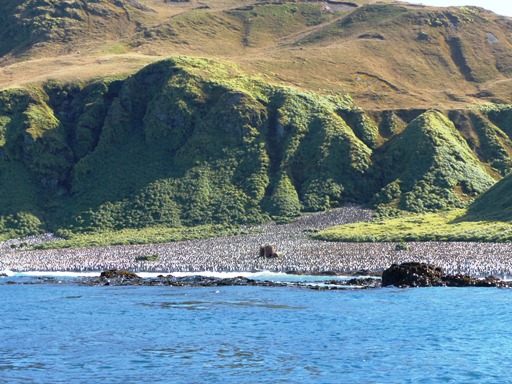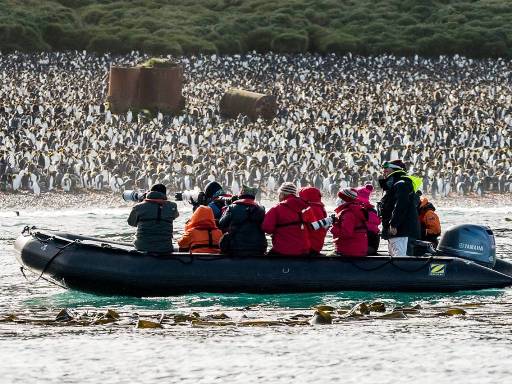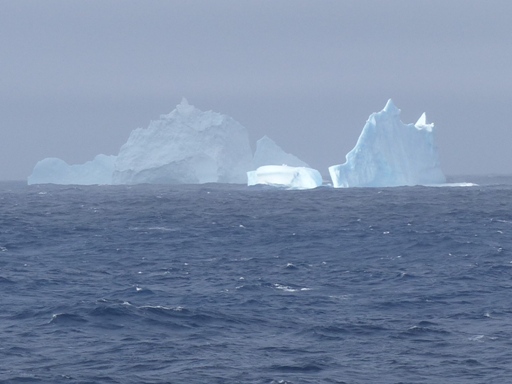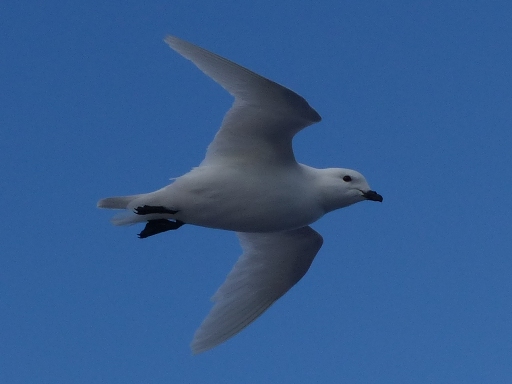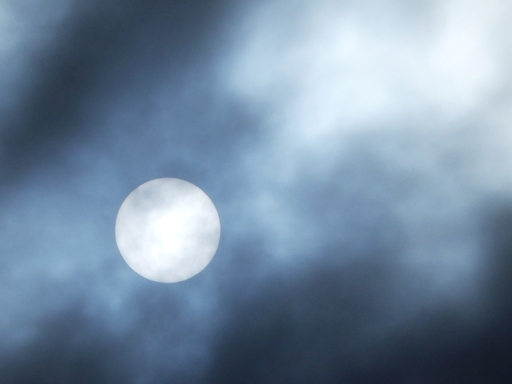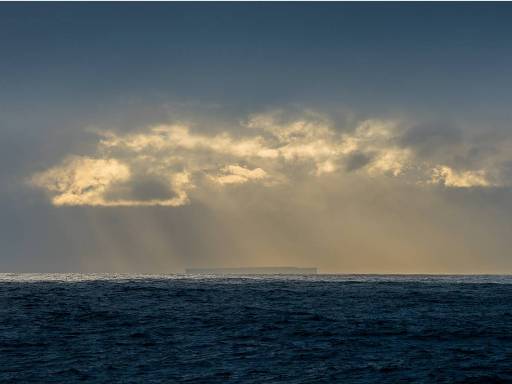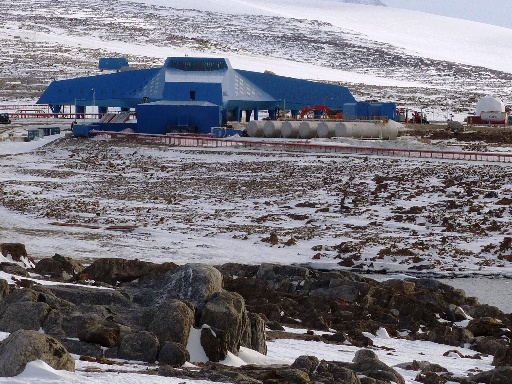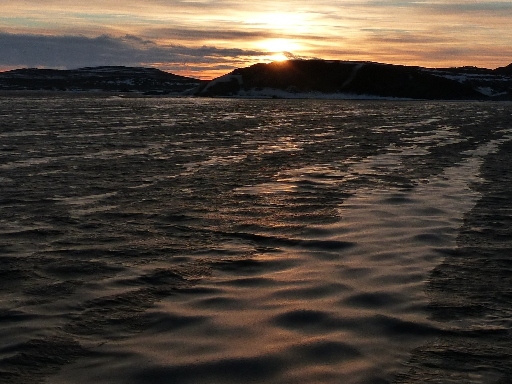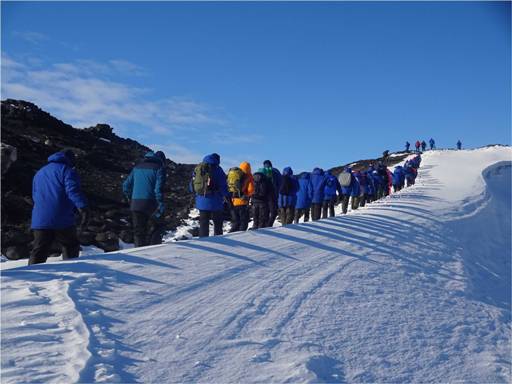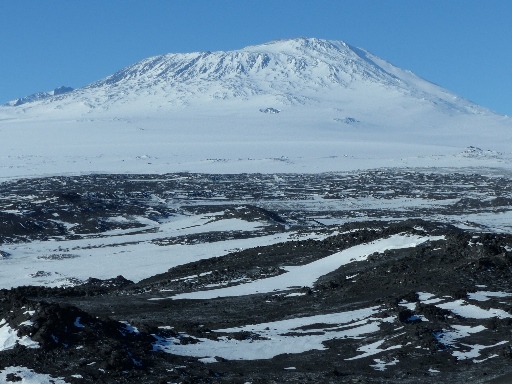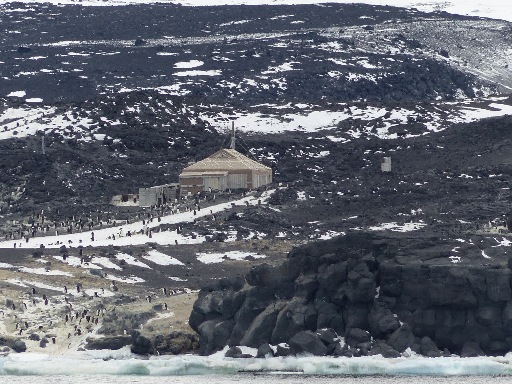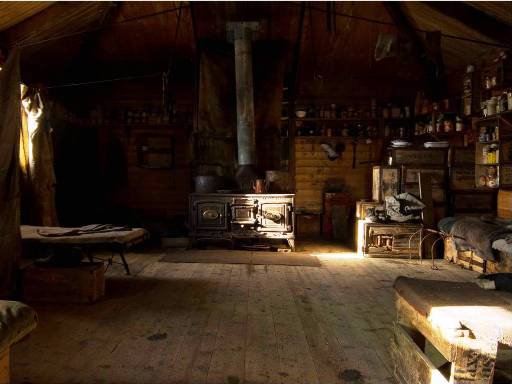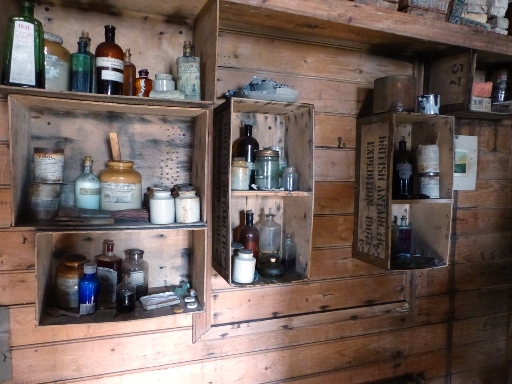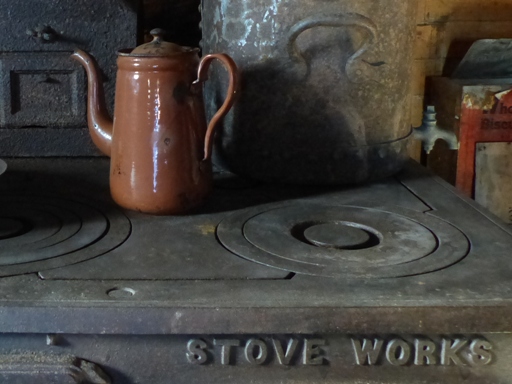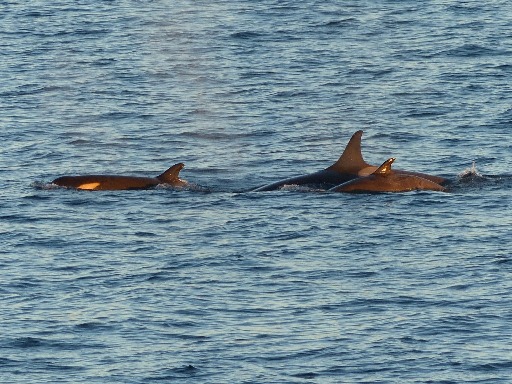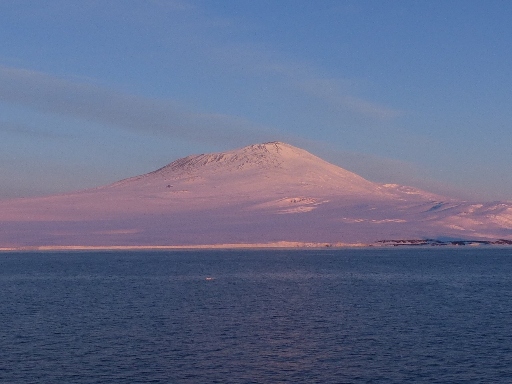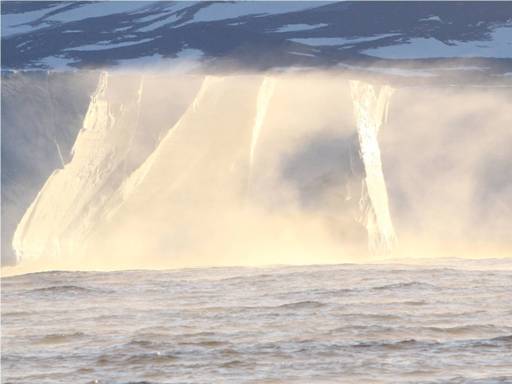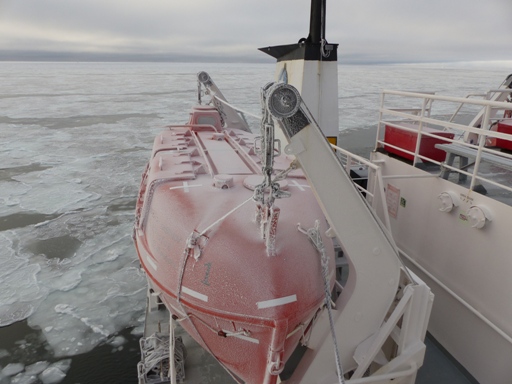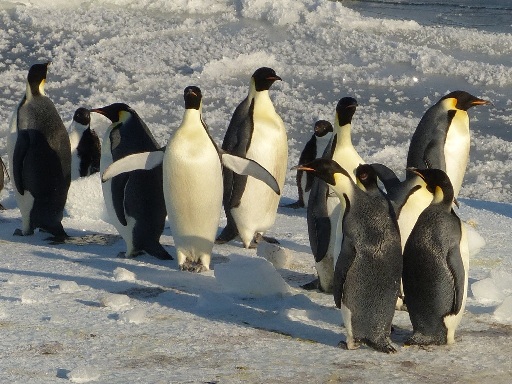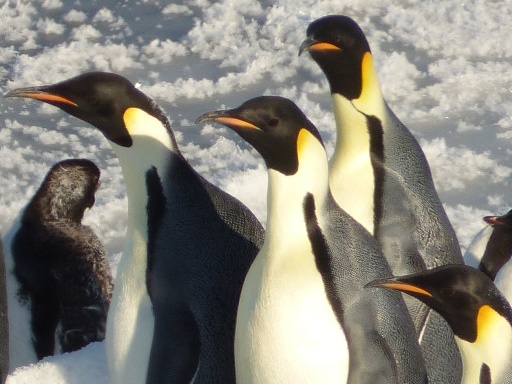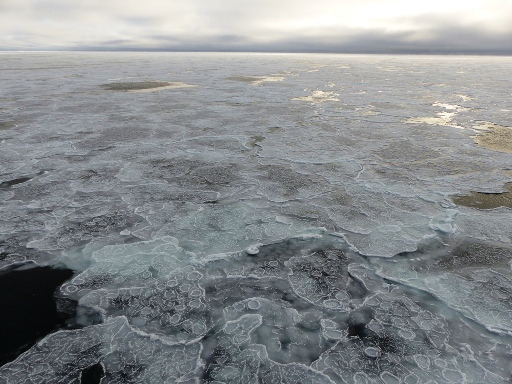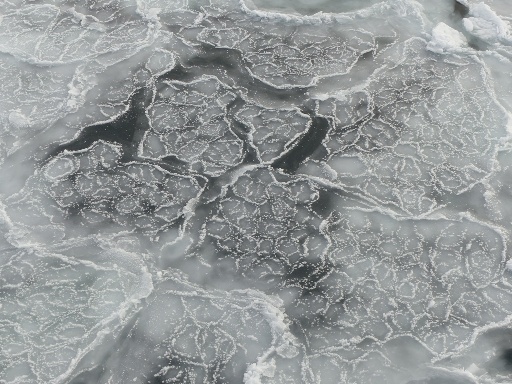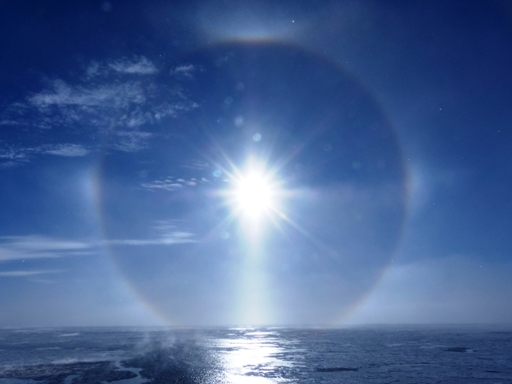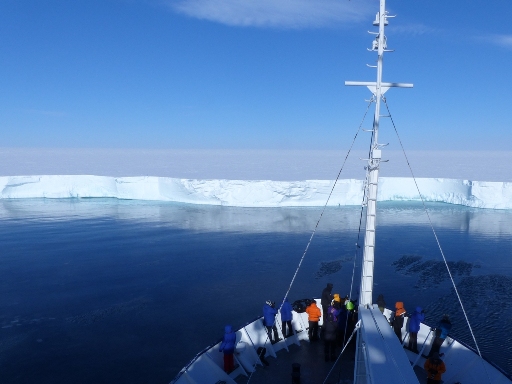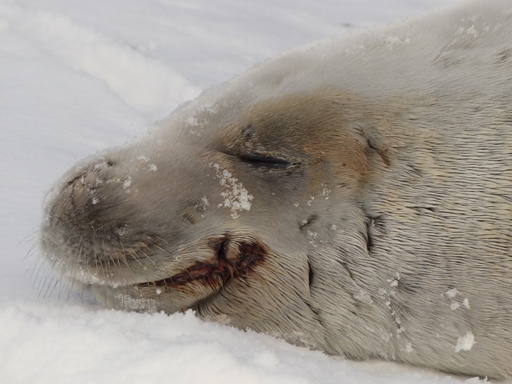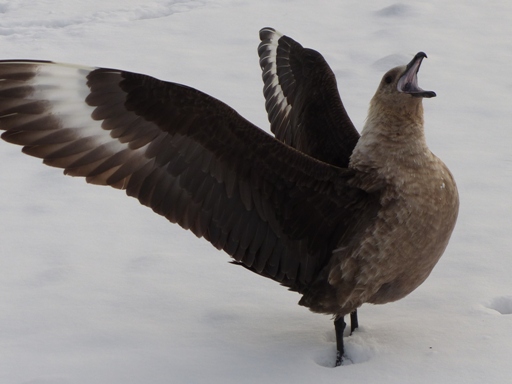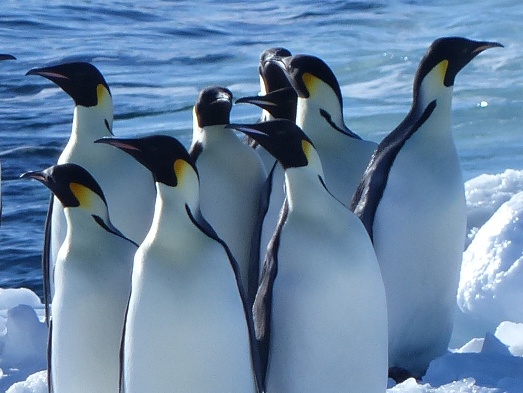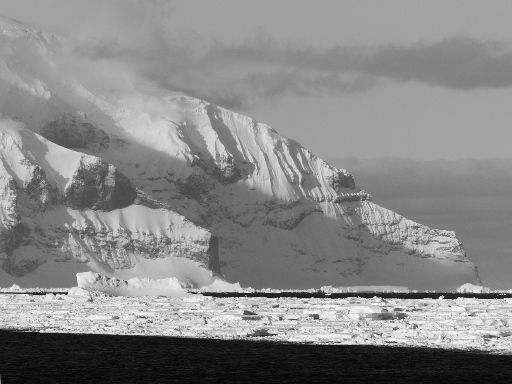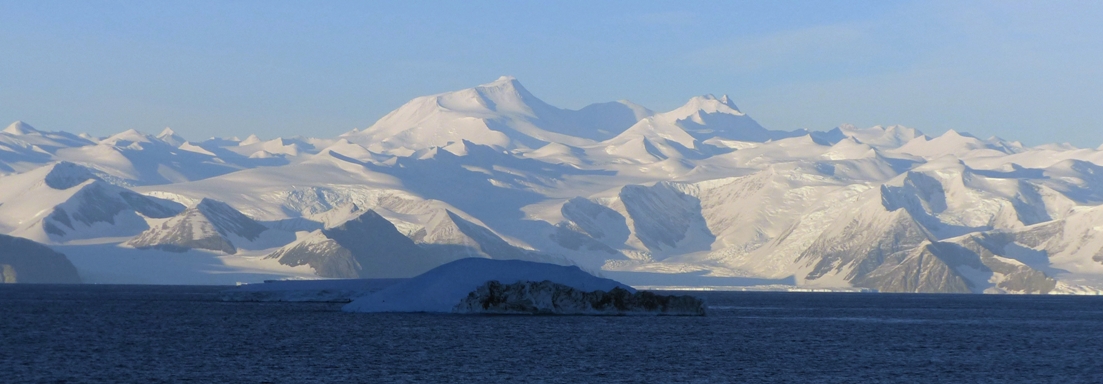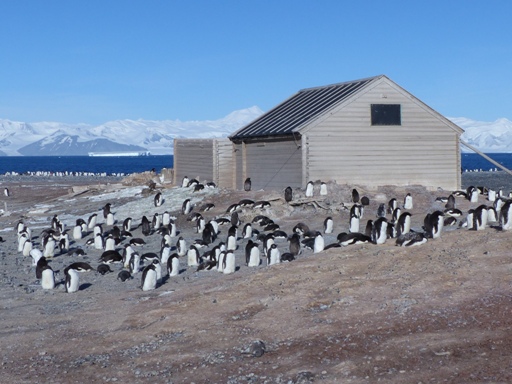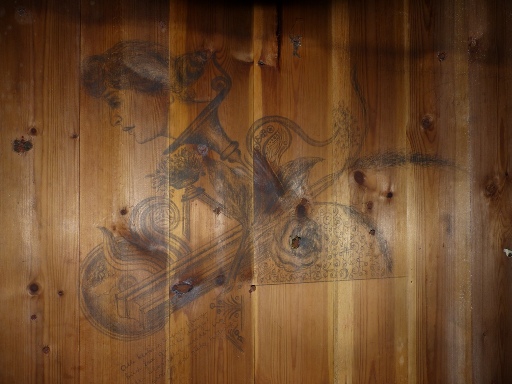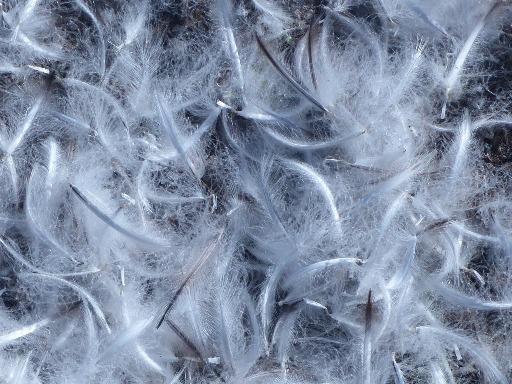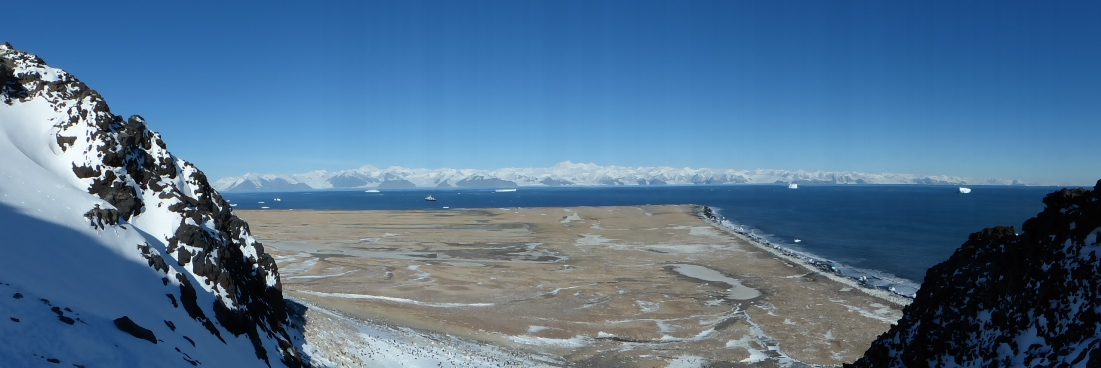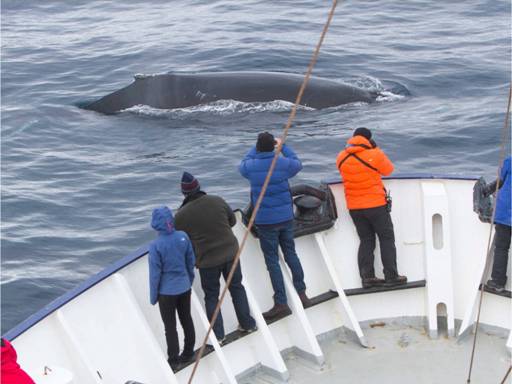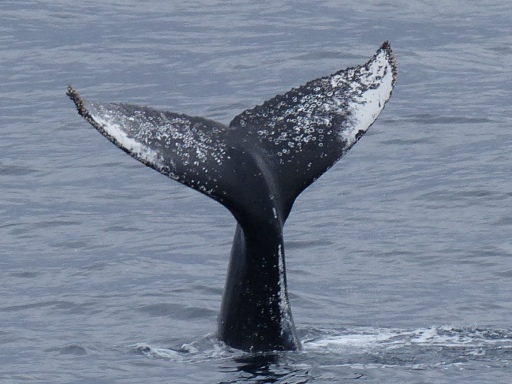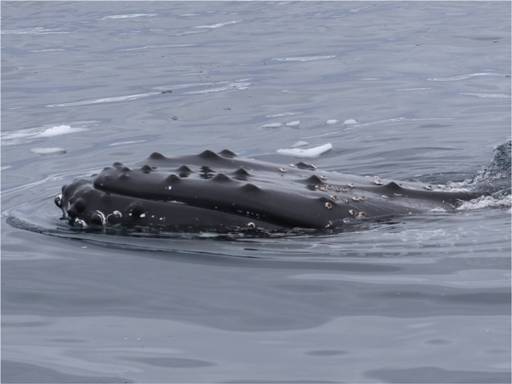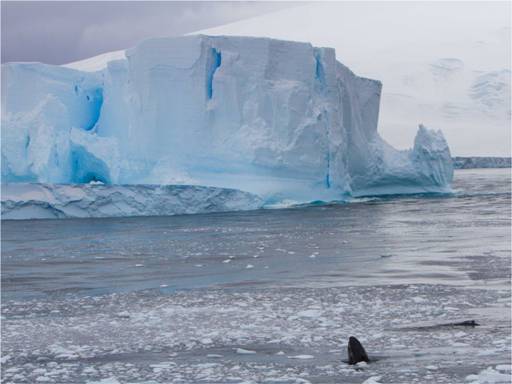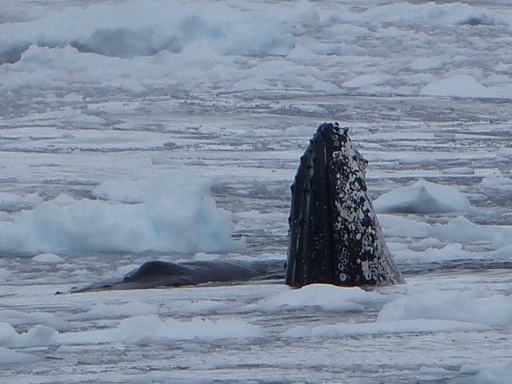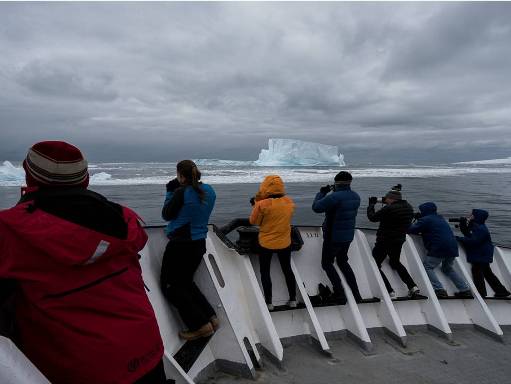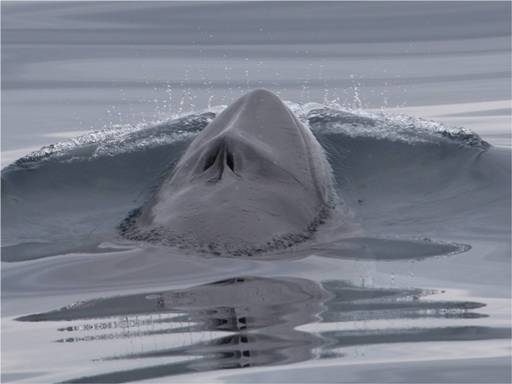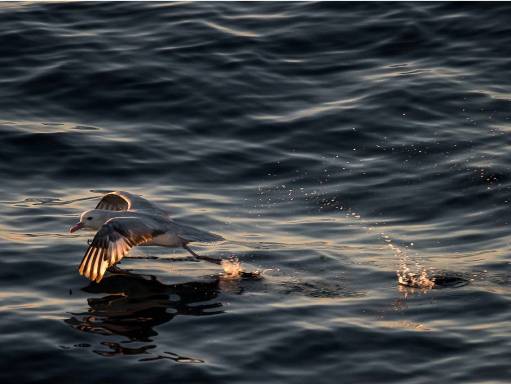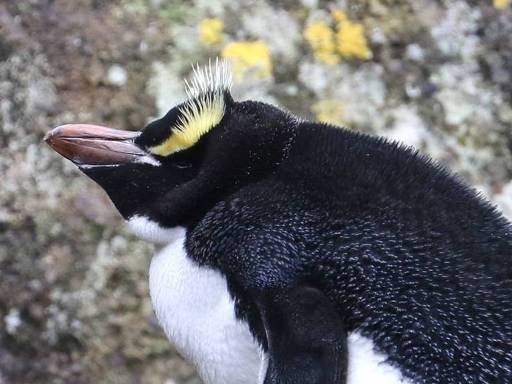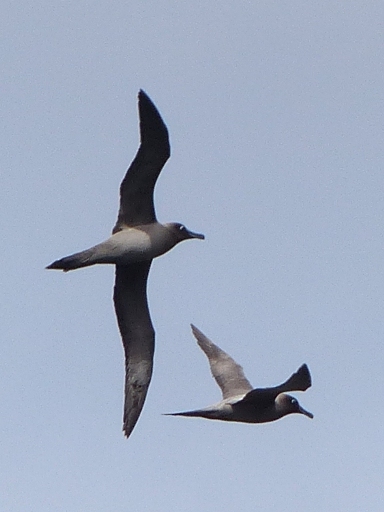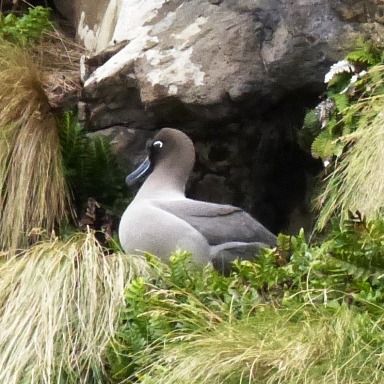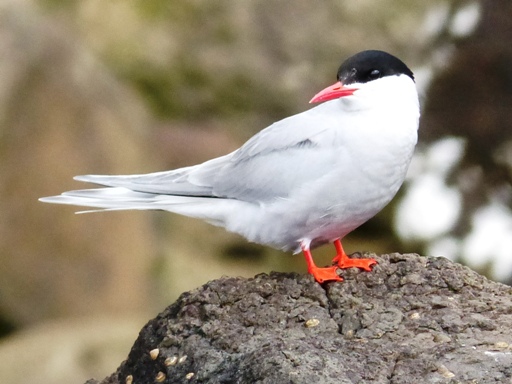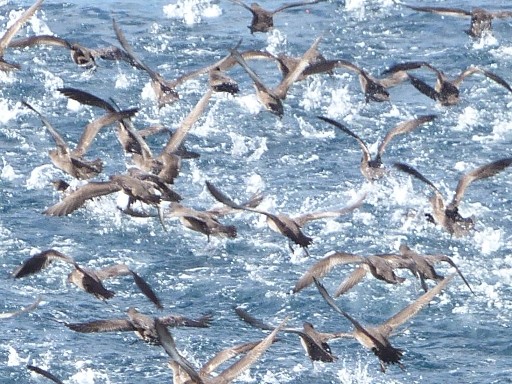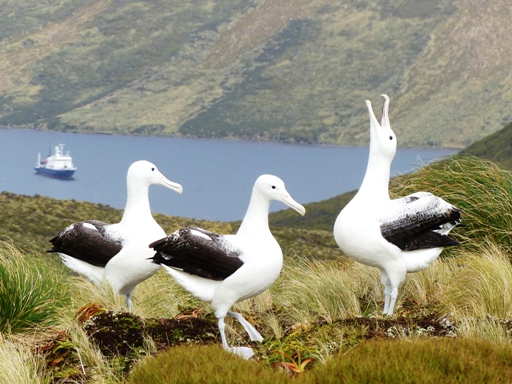In
the Wake of Ross, Amundsen and Scott
Antarctica and the Southern Ocean - 2017
As I have said before - I am keenly aware that the words and pictures from other peoples travels have limited appeal. Nonetheless, having taken the effort to capture some thoughts and images from this venture, I want to do something with them. Putting them into this format gives me the incentive to look through them and edit. I hope that you enjoy the result. I spent the the period February 8 to March 15 (35 days) as a lecturer on a cruise to the Ross Sea region of Antarctica. We stopped at several sub-antarctic islands along the way. The ship was an ice-strengthened Soviet era polar research vessel converted to passenger use. There were 47 paying passengers (PAX), 10 staff and 22 Russian speaking crew aboard. We departed from Bluff (Invercargill) and returned to Lyttelton (Christchurch).
My role on board was as "historian" to give "lectures" on the history of Antarctic exploration. I prefer to introduce myself as a "storyteller" giving "talks" about the fascinating (to me at least) history of exploration of the Antarctic and the key people involved. I received the job offer out of the blue a few months before the voyage, and spent that time beefing up my basic knowledge of the topic. Luckily, the stories of Amundsen, Scott, Shackleton and other explorers are of real interest to me. You can not read about any expedition to this part of the world without uncovering adventures full of strong, tough, determined men fighting to achieve their goals through hardship and adversity - and coming back in triumph and tragedy.
I made virtually the same trip (very similar itinerary on a sister ship) as a passenger (PAX) back in January 2001. Those were the days of film cameras and before the setting up of our website. I have always thought about adding a page with some of the scanned images from that trip - but never got it done. Now I have this trip instead - but you will hear comparisons between the 2 sometimes.
As I expect that you may not be familiar with the places we visited, many of the names have links to the Wikipedia entry when first mentioned - like this: Ross Sea
The text that follows is a distillation of the two journals that I kept during the trip - one for the PAX and one with my personal impressions. The pictures and video links have been edited to select the best or most relevant scenes from the literally thousands available. Clicking on many of the pictures will reveal a higher resolution version. The video clips sometime give the best taste of what it was really like.
The captions are in a smaller font and have been added to help identify the subject of the photos, or introduce the videos. The photos and videos are all mine unless credited to someone else. Where they are out of focus, poorly exposed, not level, or jumpy, I am sorry - but life is like that sometimes.
So - grab a cup of tea (or a dram of Shackleton's whisky) and away we go...Day
0 - Arrival in Invercargill
I meet Chris when Jill and
I pick him up at Rodney’s on the way to the airport. Chris is the bird
guy –
and has done many expeditions around the world. While waiting to board
Chris
recognises Kirk, who will be one of the passengers. Kirk has traveled
with
Chris several times before. Both of them have seen more than 95% of the
seabird
species in the world. They immediately fall into discussion about
various rare
petrels.
The flight to Invercargill is pleasant and uneventful. We get to the accommodation and move in. It looks like it hasn’t changed since the 50s – but is clean and comfortable. Every accommodation in the city is full as there are 2 events on – Cheering and Shearing – that is, cheerleading and shearing competitions.
Olga arrives having made 5 stops on her way from Vladivostok – and unfortunately losing her luggage. She is a marine mammal expert who got her PhD from Texas A&M. This will be her first trip to Antarctica.
Max and Katrin arrive with the van full of gear from Christchurch and we have yummy Thai takeaways for dinner.
Day 1 - Preparing to sail
I sleep well and wake when the alarms goes at 6:45am. We head out to meet the ship which has arrived at 7am. I start to meet the other crew members. I already know Rodney, the Expedition Leader, as I traveled with him in 2001 and we have met a few times in Christchurch over the years. The chefs are Ed and Max, Faye is Cruise Director, and Rachel is the doctor. A Russian fellow called Grisha is the other marine mammal expert.
We all have jobs to do as the ship needs to be prepared to sail at 4pm tomorrow. I get assigned the job of helping down in the storerooms as crate after crate of fresh food, frozen food, canned food, dry goods, milk, wine and more are unloaded from the trucks that pull up to the ship. The creaky old dumbwaiter gets an extreme workout. In the end, the storeroom, fridge and freezers are absolutely bulging. It looks more like 35 weeks’ worth of food than 35 days.
With that job done – and my poor old shoulders aching – I am assigned the job of distributing information into all the cabins for the new passengers. This is pretty easy – and a good chance to look around the ship – and especially into the cabins on the upper decks. They are nicer – but still by no means luxurious.
I will be in cabin 332 – sharing with the New Zealand government representative, Jason. This is just across the passageway from cabin 312 – which was my cabin in 2001. In all honesty the cabins do not look to have changed at all in the intervening 16 years. They are comfortable and clean, but basic.
Most of the others take the chance to head to town – as some of them are going back-to-back and have only this chance to be away from the ship for the 2+ months of these voyages. I have no particular reason to go to Invercargill, and am not selected to meet the PAX this evening or in the morning. I take the chance to have a look at the Lecture Room – which is a bit roomier and nicer than I remember it.
My berth and looking into the cabin from my berth. We are on the 300 level - or just above the waterline.
The dining room is also on this level. Our floating home pictured at Macquarie Island
The Bridge is on the 600-level. The Lecture Room is on the 200-level. We have access to the Bridge at all times.
Day 2 - Departure Day
We meet at 7am for breakfast and to get the work assignments from Katrin. These are the final preparations for the new voyage – cleaning, replenishing the bar and dining room supplies, putting the luggage into the right cabins and so on. No dramas.
At 1430 we assemble to direct the new PAX to their cabins. This is quickly accomplished. On first impression they are a varied and enthusiastic lot. One group stands out as we have 10 Chinese people who speak no English at all.
At 1600 we spend 2 hours with welcomes, introductions, safety, logistics and a life boat drill. For the drill the siren rings and we all actually climb into the lifeboats. It is a very tight fit with the passengers and staff in cumbersome life jackets. Grisha then announces that in a real emergency we would add 11 crew members. Fingers crossed. We leave Bluff harbour at 1800.
I have already spoken to several people with interests in historical topics - Ruth and David breed Chinook dogs that are descended from the dogs used by Admiral Byrd and are keen to try to get close to where Little America was. Les overhears this and says that he has a folder of information he received from an acquaintance of an Eagle Scout who was with Byrd at Little America – remarkable coincidence. He says that he thinks he may have the coordinates we were looking for. I meet Jenny, who is the great granddaughter of Dr. Edgeworth David – who was with Shackleton on the Nimrod and led the first sledging journey to the south magnetic pole.
The dinner announcement calls us to a fantastic meal – I have the salmon. At the staff table doctor Rachel is quizzed by Rodney about her recent experiences volunteering for Medicin Sans Frontiers (Doctors without Borders) in the Mediterranean rescuing refugees off the coast of Libya and taking them to Italy..
As I write this Bird Club is underway. Bird Club is the evening gathering to review wildlife sightings, and have a chinwag.
Day 3 - Snares Islands
We awake at the Snares after a night of gentle rocking and rolling.
We then grab life jackets and, with thousands of sooty shearwaters circling the ship, we load into the zodiacs for our first wildlife viewing. The entry to the Snares cruising area is through a cave/tunnel looking for all the world like something from Disneyland – welcome to the real Magic Kingdom! We spend 90 minutes among the Snares crested penguins, fernbirds, Snares tomtits, New Zealand fur seals, sea lions, elephant seals, and extraordinary native forest on the land and kelp forest in the sea. We complete a memorable excursion with a swing by the cliffs populated with nesting albatross while their mates soar above.
Zodiac cruising to penguins, Snares crested penguins, Hookers sea lions in the kelp, New Zealand fur seal
My first talk, Human History of the Auckland Islands, is scheduled for 3pm – and I take a sea sickness tab at 11am as we leave the Snares. I spend the hour before the talk up in the bridge fighting a bit of nausea and a lot of drowsiness. I nearly nod off standing up. The talk is well attended by PAX but no staff. A few PAX are too sick to attend, one bolts from the room midway, and the entire Chinese contingent skip it entirely. In the event, adrenalin carries me through and I have no sickness issues during the talk. I feel that I rushed it a bit – but finish bang on 50 minutes. There are good questions and afterward several PAX tell me how much they enjoyed it. Good to have it under my belt.
I feel sick again later in the afternoon but after a quick burp and a lie down am restored and eat a good dinner.
Day 4 - Enderby Island, Auckland Islands
At 0200 we arrive off Enderby Island and anchor in the shelter of Port Ross allowing for a much less turbulent finish to our sleep.
From Sandy Bay I am part of the "long walk" excursion - a 12km (7 mile) ramble over the inland. The initial portion is along the boardwalk giving nice views back to our floating home, and passing the nesting Southern Royal albatross. We start east in a stiff cold wind with occasional horizontal rain. This persists long enough to see the waterfalls being blown up the cliffs on the rugged north coast and to serve as a reminder of the true nature of the sub-Antarctic. Still, overall it is a day that calls more for sunscreen than raingear. We pass a solitary, slightly confused looking, Yellow Eye penguin on the cliff edge, pause for thought at the memorial to the shipwreck victims at Derry Castle reef, and enjoy the migratory waders in the pools and fur seals on the rocks. We pick our way through the tripping tussock maze – and photograph the posing sea lions along the way. The sweet welcoming serenade of the bellbirds and tuis in the twisted rata forest labyrinth is truly special.
Looking back across the island to the ship, the long walking group head east. Northern giant petrel (picture credit: Grisha?), plaque to commemorate shipwreck. Hooker sea lion with pup (picture credit: Olga?) and saying hello. Yellow eye penguin, antarctic tern. Rata blossoms, twisted rata forest. Megaherb undergrowth in the rata forest with fallen blossoms, megaherb leaf closeup.
Here is a video clip that is more to hear than to see: Bellbird and tui song in the rata forest
The most fun thing is that when we land and the Department of Conservation researcher comes down to greet us – after a few words he greets me by name. It turns out to be Chris, a workmate and friend from 15 years ago. It is good that he recognises me – as I wouldn’t have picked him – he was formerly clean shaven but now has a full beard and is slightly grey. Due to my work commitments we do not get much chance to spend time together, but hopefully we will get a chance to catch up back in NZ sometime.
I put on the chest-high waders and get into the water to assist with zodiac landings, and travel at the tail end of the walking group making sure that no one gets left behind. I am even able to help answer a few questions about birds, plants and introduced species. I am getting to be part of the staff.
Day 5 - At Sea
With our first semi-rough weather we all heed the common warning to “keep one hand for yourself, and one for the ship”. Moving around becomes a bit of a dance with the ship as she teaches us the Passageway Shuffle, the Stairway Sidestep, the Bar Pole Twirl, and the ever popular Wave Crest Hesitation Hustle.
I am still battling with seasickness which seems to come in waves (pun intended) – I am fine for a while and then not so fine. The side effects from the meds are not too pleasant but when I stop taking them it isn’t too pleasant either. I skip dinner, try a different pill and go to bed early.
Day 6 - Buckles Bay, Macquarie Island
I am feeling better this morning – so I think the change of meds has helped. The arrival at “Macca” leaves us at anchor in the lee of the island so the next day or so will give us all a chance to recover.
The landing at Buckles is a real challenge. The beach is steep, the rocks are the size of footballs and covered in slippery seaweed, and the waves come crashing in. The plan is for the zodiacs to come in bow first while 3 of us in the water swing them around for the PAX to exit from the stern. I am again in chest waders in the water. Twice the zodiacs surf in on waves and crash bow first into the beach as we scatter and the PAX hang on. Twice I get tripped up by the rocks and undertow and fall into the water – but luckily not while the zodiacs are around. So I end up quite drenched and cold, but the PAX are all safe, and most are grateful for the help. There really is quite a lot of yelling and the PAX really do get manhandled.
Upon landing we are immediately surrounded by elephant seals and welcomed by the crew of the Australian Antarctic Base and Tasmanian Parks and Wildlife Service. They conduct us on a guided tour of the site including a welcome cup of tea and a scone. We learn some of the history and current operations of the base. Wildlife seen included scattered Gentoo penguins, many giant petrel both northern and southern – some feasting on a sperm whale carcass – and lots of elephant seals piled together on the beach or in the tussocks.
I plan to sleep well tonight.
Grisha, Chris and John headed back to the landing(photo credit: Olga), Elephant seal and Gentoo penguin.
Day 7 - Sandy Bay, Macquarie Island
This morning is another wet landing partially spent waist to chest deep in the sea, but with a gentle gravel beach and only small waves - it is a doddle. I have very fond memories of Sandy Bay from my 2001 trip - and it is as remarkable a wildlife experience as I remember. It truly is one of the most spectacular places to experience the wild world. The fact that the penguins are the chief attraction with their beauty, their inquisitiveness, and their comic appearance and behaviour makes it all the more special.
We are there for much of the day freely wandering among tens of thousands of King and Royal penguins and the piles of “ellie” seals – all the while having access to the expertise of the Macquarie and Heritage staff. It was impossible not to be charmed and enchanted by the beauty and antics of the penguins, and amused by the snorts, belches and behaviour of the seals.
The King colony, courting Kings. Olivia posing for the brochure photo, King profile. King colony with chick, elephant seal pile
Art photo alert - closeups of King plumage x 4
A pair of Royal penguins, the royal colony. Royal closeup, two Royal crests. View of Sandy Bay from the Royal colony looking south, Royal closeup. Royals in the water(photo credit: Grisha?), ellie seal closeup
In the afternoon we cruise south to Lusitania Bay – home to a huge King penguin colony. On a rare Macquarie afternoon of light winds and sunshine, Rodney launches the zodiacs to cruise in for a closer look – and smell. With members of the colony swimming, bobbing and porpoising around us we approach the beach quite closely, and are pleased to see the rusting digesters, surrounded by myriad penguins, standing as silent evidence that the penguins have prevailed in the battle against their hunters.
Here are 2 video clips from Sandy Bay: King Penguins and Royal Penguins
The King colony at Lusitania Bay - ~250,000 birds at peak breeding time, Kings and digesters (formerly used to harvest them for their oil) and zodiac (photo credit: Olga?)
I take advantage of our last hour in the lee of the island to have a quick flick through the photos before we set course for Cape Adare at 2100.
It is nice having this respite with a stable home, but I feel reasonably confident in my ability to cope with the sea conditions to come, and am looking forward to delivering a couple of talks on the way south. We are about 55°S, or approximately the same latitude as Cape Horn, so are about to cross the rest of the Furious Fifties and the Screaming Sixties – and hoping they do not live up to these names.
The mealtime banter among the staff at mealtimes is quite amusing and fun. Everyone is mercilessly teased by everyone. Clearly the morale is very good.
I plan to sleep well tonight.
Days 8-11 - At Sea enroute to Cape Adare
Our exceptional luck with the weather continues as we pass through the Furious Fifties without any real fury and the Screaming Sixties with barely a murmur. I am not suffering any mal de mer with the new meds. By Day 9 when I give my second talk - Antarctica Unveiled: Ptolemy through Borchgrevink - I know everyone on board by sight and name, which makes me much more relaxed. It goes very well, with laughs at the right places and thanks from many people when I finish. There is nearly a full house of PAX and several of the crew attend. A few people point out useful additions and corrections.
Ice berg, snow petrel. Sun obscured by clouds, sun and clouds over berg (photo credit Olga?)
The voyage immediately prior to ours had a travel blogger, Sherry Ott, aboard. For her video of the the food and how the chefs coped with the rough weather see this video: OttsWorld Meals On Board
On Day 10 we spot the first icebergs, which is cool but even better is the reaction to my talk in the morning - the Discovery Expedition. There is good attendance, they again laugh in the right places and I get a round of applause at the end. Several tell me how much they enjoyed it. I am even able to answer most of the questions. In mid-afternoon we cross the Antarctic Circle (66°34’S) and celebrate with a tradition on these voyages - the awarding of the "Mark of the Penguin". This fun and quirky ceremony requires that everyone take an oath to advocate for the protection of Antarctica and her wildlife “even to those who will not listen”. We celebrate our new status with a cup of mulled wine, and the immediate appearance of tail-slapping humpback whales off the starboard bow.
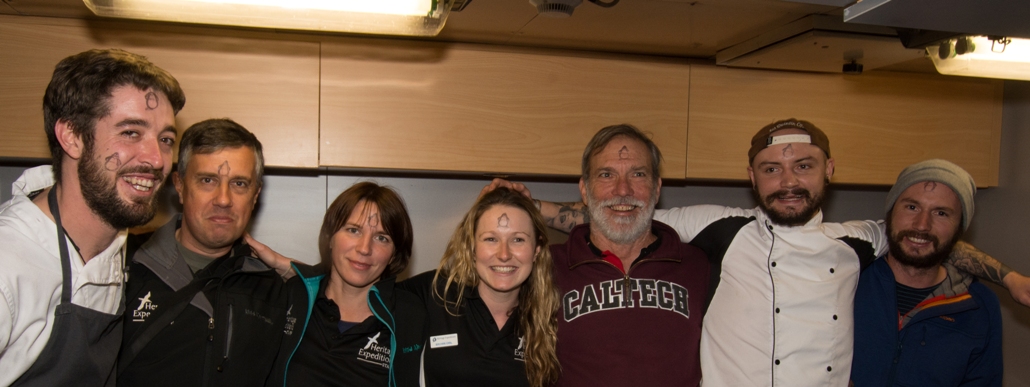
Day 11 sees our approach through the afternoon to Cape Adare, part of the time with a snow petrel which circles and hovers just an arm’s length above the port railing.
The evening is an absolute treat as we pull into Robertson Bay as the Bremen pulls out and the Araon cruises through – a very rare occurrence to have 3 ships within sight in the Ross Sea. But, we don’t have much time for that as our attention is focused on the stunning scenery surrounding us – the peaks of the Admiralty range including Mount Minto at 4168m (13893ft); the steep cliffs of Cape Adare; the crashing surf, historic huts and Adelie colony on Ridley Beach; the sun glinting off the icebergs; the sea ice with penguins and seals dotted here and there; the craggy bergy bits floating by; and the deep, deep blue of the cold, cold sea.
Cape Adare (photo credit: Olga?), Adelie on sea ice
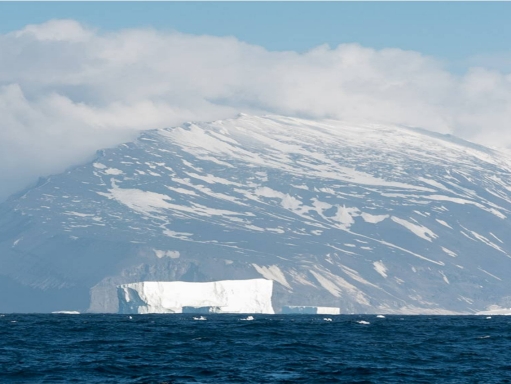
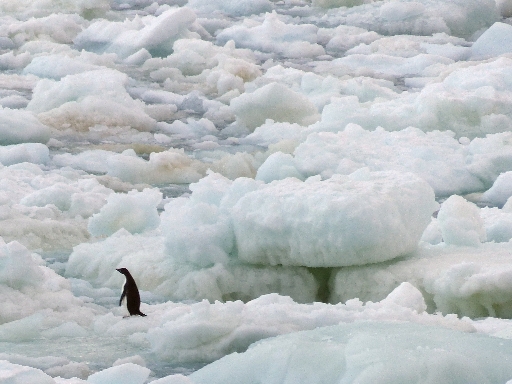
The staff dynamic continues to be fun and entertaining. Faye sets up a movie evening to watch Titanic – but even popcorn is not enough to see anyone awake all the way through to the end.
Day 12 - Foyn Island - Possession Islands
An early inspection of the conditions shows that no landing was possible, so the morning is staff duty – mostly peeling parsnips and onions for dinner (the resulting parsnip soup is delicious so I get the recipe). We leave Cape Adare knowing that we can try again on our way north. A stunning day unfolds as we approach the Possession Island group and prepare for our landing on Foyn Island. Once ashore we wander up and down the sunny beach getting our first chance to get up-close and personal with Adelie penguins and Crabeater and Weddell seals. All the while the pyramidal spire of 3335m (11116 ft) Mt. Hershel is dramatically lit across the bay.
Foyn Island beach panorama with Adelie. Adelie on the beach, Adelie closeup. More Adelies with Mt. Hershel, Weddell seal, Weddell seal pelt
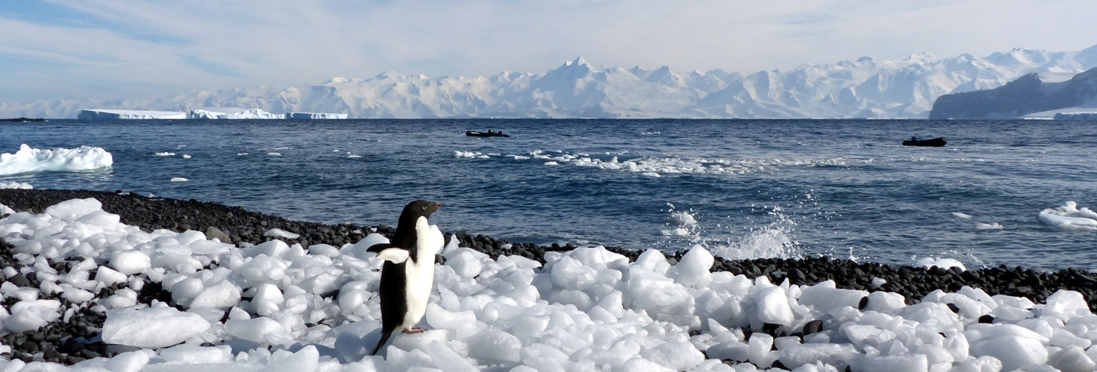
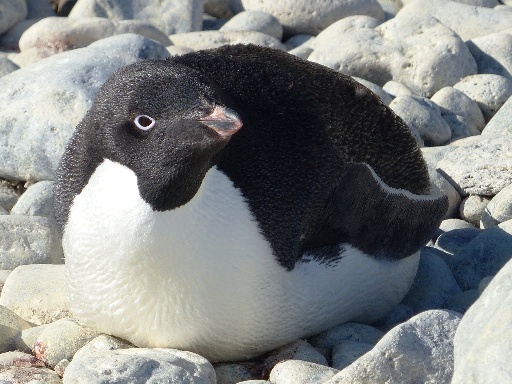
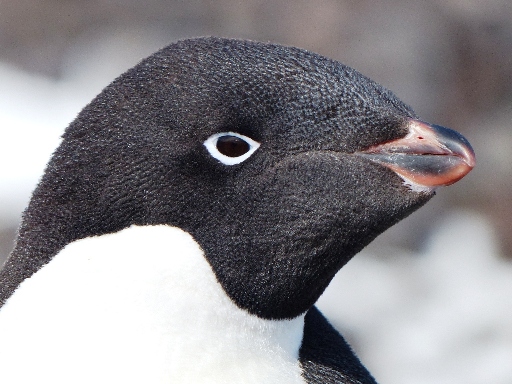
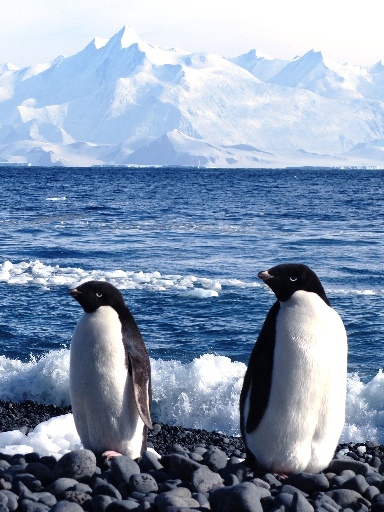
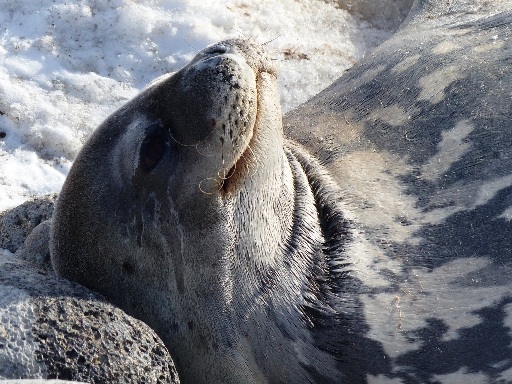
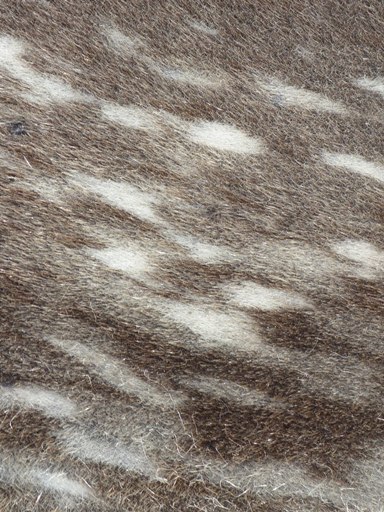
The landing is another chance to wade into the crashing surf – this time dodging ice floes - and wrestle with incoming zodiacs. Not really what I thought I was signing up for – but what the heck - an Antarctic expedition historian needs to be ready for anything.
After dinner we get a zodiac cruise at Cape Hallett. We board and explore the sheltered bay filled with beautiful vistas of the nearby mountains, overhanging glaciers, refreezing sea ice, seals, penguins and delighted expeditioners.The sea is already starting to form pancakes as it refreezes, and we get very close to a crabeater seal. My boat is mostly staff and is full of laughter and fun. A day for which superlative adjectives fail.
Zodiac at Cape Hallett, crabeater seal. Art photo alert - monochrome Cape Hallett cliffs, Mt. Hershel sky
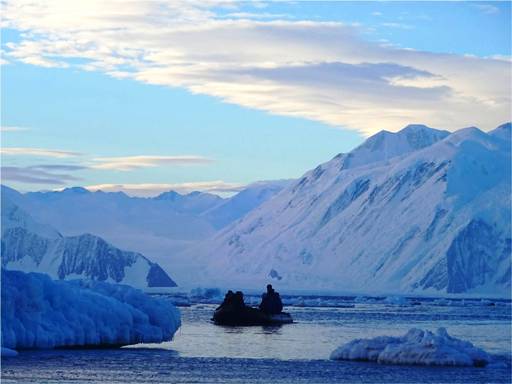
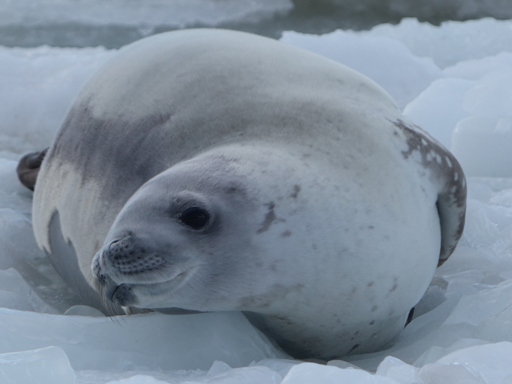
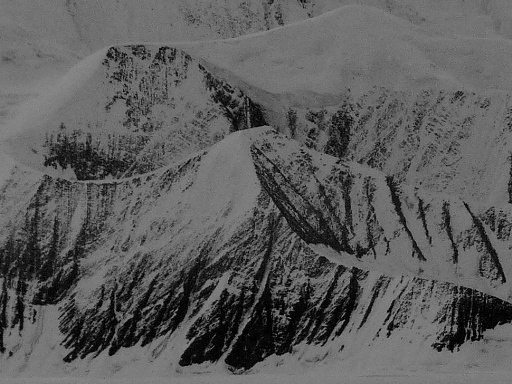
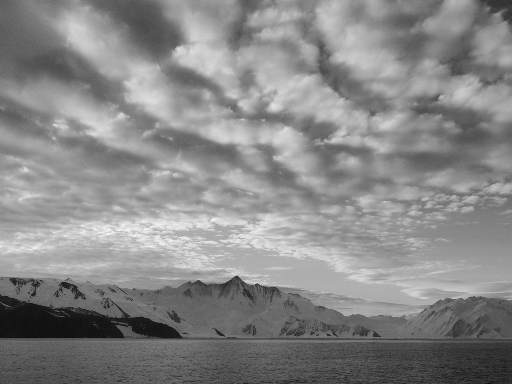
Day 13 - At sea
After yesterday’s sunshine today had a much more Antarctic feel. For much of the morning we pushed into a strong south-westerly wind and swell and watched the waves crashing over the bow coat the Bridge windows with ice. During the afternoon the wind and waves abated while the sea turned “greasy” by being coated with refreezing pancake ice. Any venture outside for photos or clear viewing required good preparation, and served as a reminder that we were approaching 75° south.
My presentation - The Nimrod Expedition: Shackleton’s Furthest South - is again well attended and received. I am able to answer all the questions and spend some time in the Bridge helping to answer more. Most of the afternoon is spent reading.
The ship cutting through the re-freezing sea is quite visually odd – turning the ocean swells into a shimmering silk mixed with jigsaw puzzle. It starts to give some indication of the fact that everywhere around here, and all the way out to nearly 60°S - all the distance we have covered in the last 5 days - will be frozen solid in a few months.
The refreezing sea - small pancakes, "greasy" sea
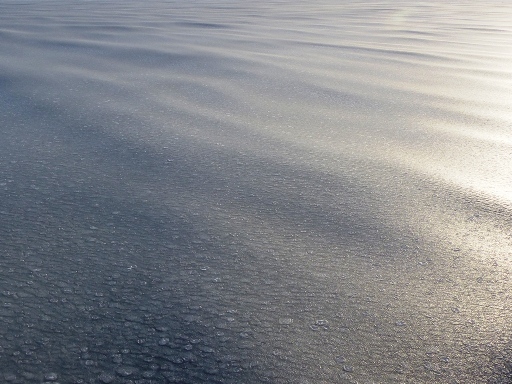
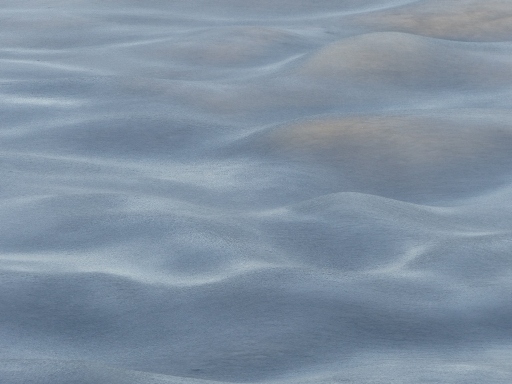
Use this link for a video clip of: Greasy pancake sea
Day 14 - Terra Nova Bay
With a temperature of -10°C (14°F) and strong winds we are not able to land at Inexpressible Island, but do get a good look at the site of the ice cave that sheltered 6 men through conditions inexpressibly more harsh than this. So, we go around the corner to the much more temperate micro-climate of Gerlache Inlet to make a landing at the unoccupied German Gondwana base and overlook the new Korean Jang Bogo station.
I am surprised at the difference between January 2001 and February 2017. Part may be due to the fact that different years have different weather, but mostly I think that February is already autumn this far south. We are having sunsets, the sea is freezing, the penguin colonies are mostly empty with all the chicks fledged, and the temperatures are far lower on this trip than the one 16 years ago.
The landing is relatively easy – except that the beach is covered in “push ice” – or small ice floes that have been pushed up onto it. So, the staff in the first zodiac wade in to push the push ice out of the road. This is no easy task and my hands get very wet – but I am pleased that they stay warm in the wet gloves. My fourth landing on the continent proper – but an exciting first for many people.
Korean Jang Bono Station, sunset on the refreezing sea
For dessert after dinner we push through last year’s pack ice drifting north to meet us, with our first Emperor penguins along for the ride.
Day 15 - Cape Royds
After lunch we land at Black Sand Beach and made the trek over the lava flows and snow fields to the hut at Cape Royds. We see the summit of Mt Erebus peaking through the clouds along the walk, and the view just gets better and better as the afternoon advances.
Our visit to the hut
gives us the chance to spend a few moments sharing the space
that had held Ernest
Shackleton and his team when they ventured into the unknown 110 years
before.
We have the chance to
reflect on the trials and achievements of those men, to
explore the area where they made their home, and to see this setting in
its
full glory.
I am back in waders to assist with the landing, but this is the easiest landing yet and we are soon on the 30-40 minute walk through lunar-like lava flows to Shackleton’s hut. This journey over the hill is the best possible way to approach this historic site – and the day could not have been scripted better as the sky clears and Erebus emerges.
Only 8 people at a time are allowed in the hut, and I am assigned the responsibility of staying inside as 7 PAX rotate through. I do not give guided tours, but am available to try to help point out interesting artifacts and details, and answer questions. I intentionally leave my camera behind and get plenty of time to try to have a close look at all of the contents. It is a privilege to get this chance. As the PAX file through it is a pleasure to observe their reactions and try to help them get the most from their visit.
The start of the walk over the hill to Cape Royds(photo credit: Olga?), the view of Mt. Erebus from the walk back. The hut as seen from the sea, hut interior (photo credit: Grisha?). Hut interior detail, Killer whales, Erebus at twilight.
The surprise toast using the bottles to “Shackleton’s Whisky” that I have brought along goes down very, very well. The bar is full as I explain the story behind the whisky and offer the toast. In the end I am myself toasted by the appreciative PAX. We drink all of my supply save a dram left for the chefs. Good fun.
This group has had extremely good fortune with the weather and sea conditions – as I did when I was a PAX. I can see them coming together and forming friendships – as I did when I was a PAX. The vibe is a bit different being a member of staff – and I am intentionally somewhat on the outside of their groups – but all good.
Pods of orcas visit in the evening light as the sun sets - impossible to capture in words or pixels.
Day 16 - Cape Evans
Having drifted overnight in McMurdo Sound we were well placed to land at Cape Evans – through a very narrow slot in the “ice foot” covering the beach.
With Shackleton’s hut still fresh in our mind it is interesting to compare it to the style and layout of Scott’s hut. The Antarctic Heritage Trust has done a magnificent job in filling every space of the large hut with a comprehensive set of supplies, personal items, and historic oddities from the men who lived there. Knowing that it was here that Scott, Wilson, Oates, Bowers, and Evans set out and never returned; here that the Worst Journey in the World started; and here that Aurora blew out to sea stranding 10 men, gives us all plenty to think about. The hut is so large, and so full, that it is simply not possible to see it all – so we all select our own highlights and focus our attention on both the details and the big picture. We have the time and space to soak in some of the atmosphere of the place – as well as trying to capture some of it in images.
A really tough landing gains us access to the beach at Cape Evans, but I luckily do not get wet as I am again assigned hut warden duty. Several PAX note that I have the best job – and they are right. The hut has had a major refit since my previous visit and is truly a treasure trove. Every shelf and corner brims with interesting artifacts. I feel very privileged.
Cape Evans hut from the sea (photo credit: Olga?), anchor from the Aurora and hut. Hut interior - kitchen and "tenement" officers bunks. Hut detail - lab equipment and Wilson's pastels. Weathered crate, Adelies porpoising(photo credit: Grisha?)
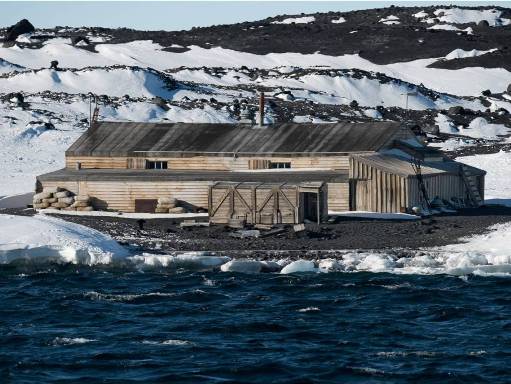
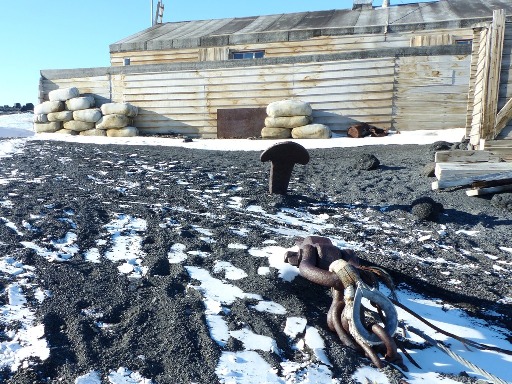
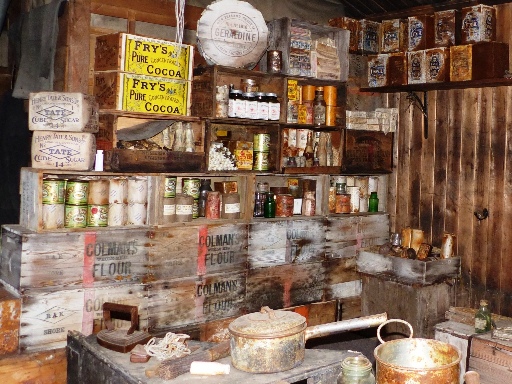
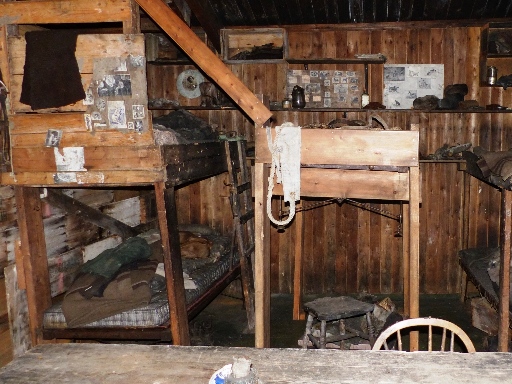
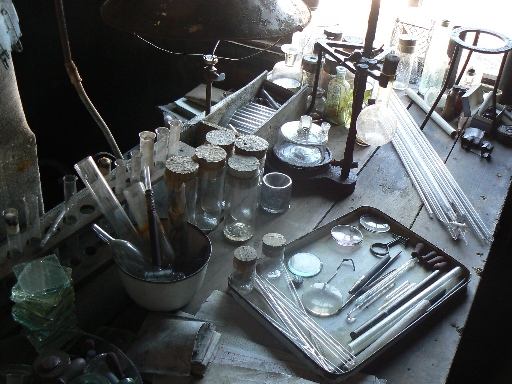
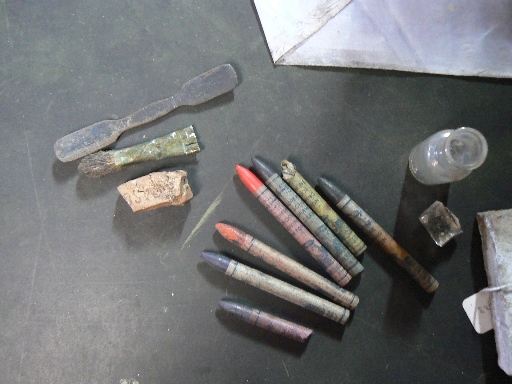
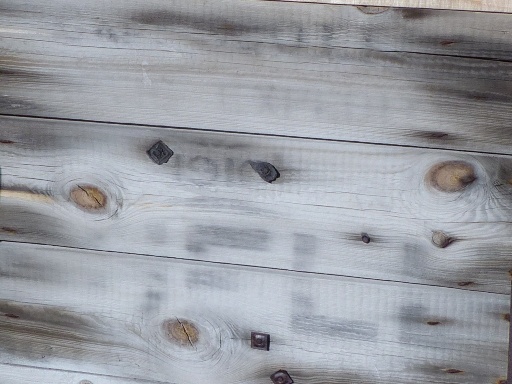
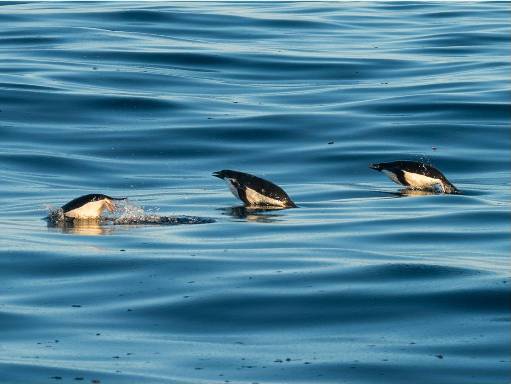
Sometimes I think that it is easy to overplay the importance of the huts – after all they represent the history of the Heroic Age of Antarctic exploration, which is only a minor bit of history in the overall scheme of things. Still, they are a unique preserved slice of that history – having been left virtually untouched since their original occupants left. There are not many 110 year old places that can make that claim. Also, the history itself is full of remarkable stories of struggles, achievements and death.
Mt Erebus provides the
backdrop
at the stern as we turn to sea to make our run to Cape Crozier and the
Bay of Whales along the edge of the great
ice barrier.
The edge of the Ross Ice Shelf- a.k.a. the Barrier. Scale is hard to see but this photo was taken from the top deck - perhaps 20m (65ft) above the sea and about even with the top of the ice. remember that only 10% of the ice is above water and the Barrier stretches 600 kilometres (370 miles).
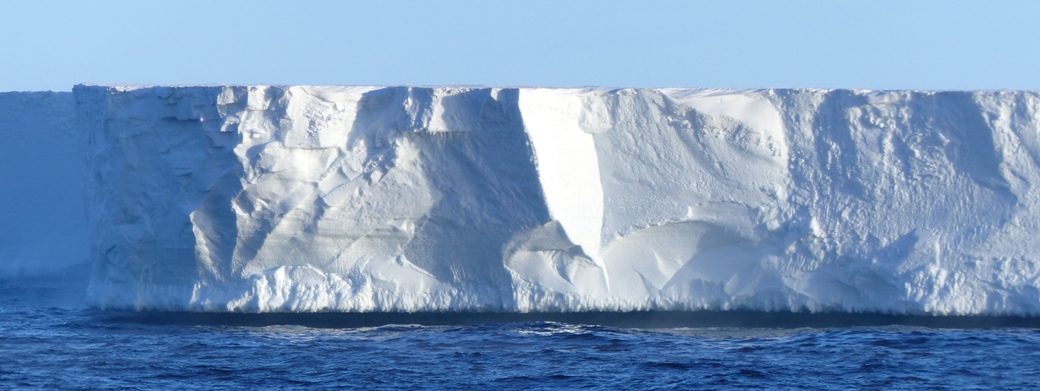
Day 17 - At sea
After the sensory overload of the previous 2 days a passage through fog and blowing snow is just what we need – and what we get. Visibility is limited but each small berg carries the possibility of Emperors or Adelies going with the floe. Meanwhile we cross the international dateline, leaving today for yesterday.
I give both parts of my talk about Scott and Amundsen’s so-called “Race to the Pole” to appreciative audiences. Both stretch to the full hour, and only one person falls asleep. Afterward a staff member tells me that they have now heard the story told by 3 different presenters and that mine is “by far the best”. Nice.
Other than that a pretty quiet day – except that I manage to convince the few cardplayers to try the game Oh Hell, and they all like it. So, I expect to be playing a bit of cards in the evenings as we are having more sea time and more free time. I am completely off of the seasick meds and have been for some time as we are sailing in sheltered waters. The re-freeze of the sea and the constantly changing weather and ice conditions make for unusual vistas.
Day 18 - Bay of Whales
It is fitting that the first day of the second half of our expedition begins with us drifting at the entrance to the Bay of Whales ready to begin the exploration of our furthest point south. As we head south so does the temperature with -16°C (3°F) at the breakfast wakeup call.
We start with excellent sightings of groups of Emperors. As we pass the sites of Framheim and Little America a circle of coloured light around the sun or “sun dog” appears on the port side - perhaps the ghosts of Amundsen and Byrd’s faithful dogs and a reminder of the huge part that dogs played in the exploration of Antarctica up through the 1990s.
At 1230 we give a big cheer as we recorded the latitude of 78°44.007’ South and thus became world record holders as the most southerly ship that has ever sailed the seas!
“The end of the sea” is indeed extreme. The ice cliff being the start of the endless white plain beyond; the huddled birds; the open sea steaming as it joins the frozen sea around it; the ethereal light from the “sun dog” and the cold wind blowing tiny “diamond dust” ice crystals combine to build a sense of being in a wild, unforgiving place.
The steaming sea at the barrier (photo credit: Olga?), frosty lifeboat. Emperor penguins, Pancake ice on the sea. Sun dog, setting the record furthest south that any ship has ever been.
Day 19 - At sea
As we retrace our course west along the ice sheet we re-cross the dateline – this time from yesterday back to today. I give my final prepared talk to another good audience. It isn’t my best presentation as I stumble over some of the facts in the final few slides. Still, when I tell the PAX that this is the last one they give me a very warm round of applause. We have a staff effort to check remaining stock and shift heavy crates of supplies from the front hold, up 2 sets of metal stairs, across the icy decks, and back to the kitchen or bar. Become an Antarctic lecturer – give up that gym membership.
In the afternoon we watch Blackfish – the distressing story of the SeaWorld orca, their capture at sea, and their trainers. Recommended. It shows why SeaWorld has announced that they will no longer have killer whale shows.
I play my 3rd game of Oh Hell – the PAX have taken to it with enthusiasm – and lose again. Sigh. An indication of the relaxed nature of the day is that Bird Club records only 3 bird species plus 2 Minke whales.
Day 20 - Cape Bird and McMurdo Sound
We begin the day with a gentle drift off the west coast of Ross Island as we prepare to land at Cape Bird. The winds and the seas remained gentle as the landing gives an excellent chance to shake off a bit of the accumulated cabin fever, stretch our legs and enjoy the fresh air. The colony is finished for the season, but there is a single Emperor holding court among the remaining Adelies; the South Polar Skuas perform aerial acrobatics while warning us that we are not especially welcome in their territory; the seals lounge sleepily; and the landscape down the beach to the glacier at the end is dramatic.
Perhaps more dramatic is the spectacle of the polar plunge upon our return to the ship. Faye, Ed, Max (headfirst!), Bill, Will, Nicci and Grisha all braved the ice covered water to our cheers and admiration if not our envy.
Tranquility returns as we cross to the western side of McMurdo Sound on a still, sunny afternoon with the sea a mirror of the sky - alternating with patches of crystal ice. But the drama and excitement is far from over. Mt Erebus emerges from the clouds while the Killer Whale pods, including many calves, circle us as we circle them. As we trace the ice edge south the katabatic winds get up and the temperature plummets. At this boundary of the sea ice we pass large groups of Emperors waiting in preparation for their winter march to the breeding colonies; a continuous stream of patrolling orcas; seals pulling out and dotted here and there; and a rare viewing of a pod of 20+ Arnoux’s Beaked Whales in a frenzy of activity at the surface. Wow.
All in all it was a good thing that yesterday was a rest day, as today was no time for a nap.
Art photo alert - monochrome image of black and white birds on black rocks and white snow. Crabeater seal, south polar skua display. South polar skua in flight. Killer whales. Crabeater seals on the sea ice. emperor penguins on sea ice edge. Arnoux's beaked whales(photo credit: Chris?), sunset as we sailed north
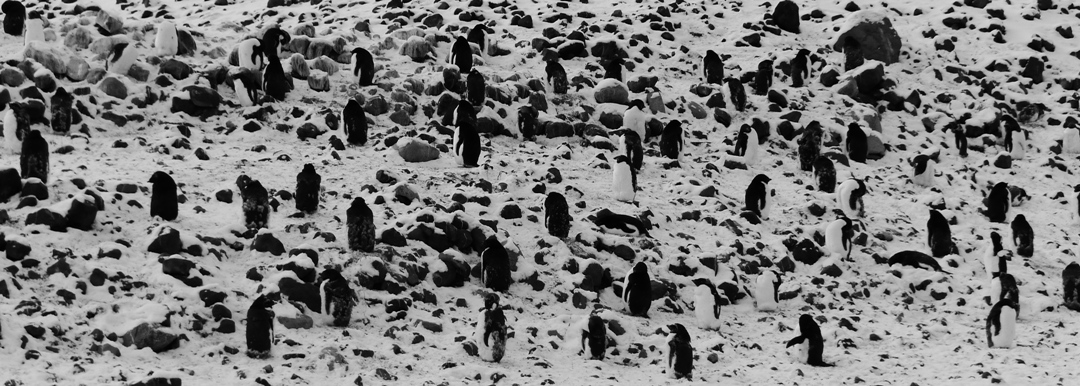
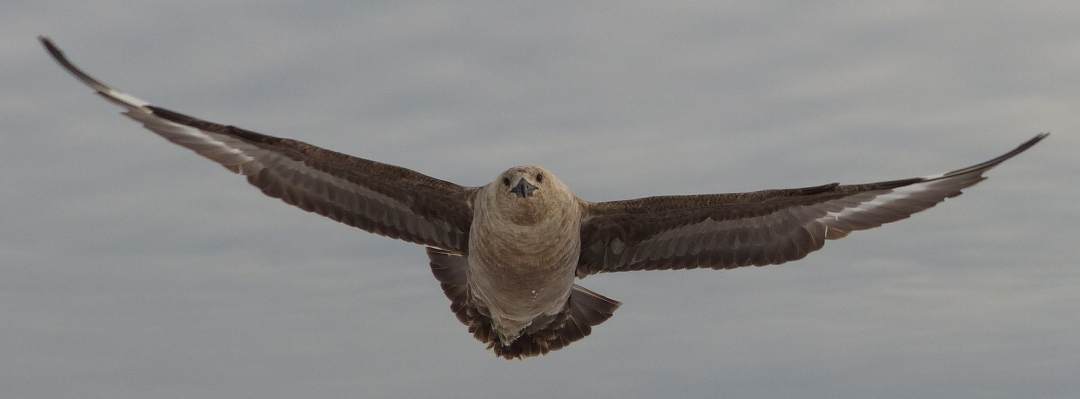
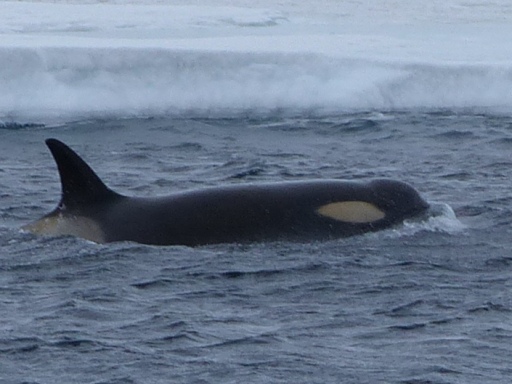
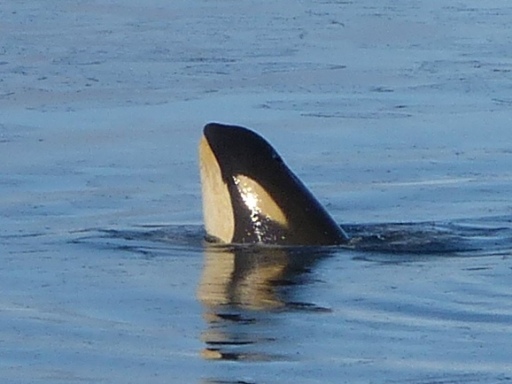
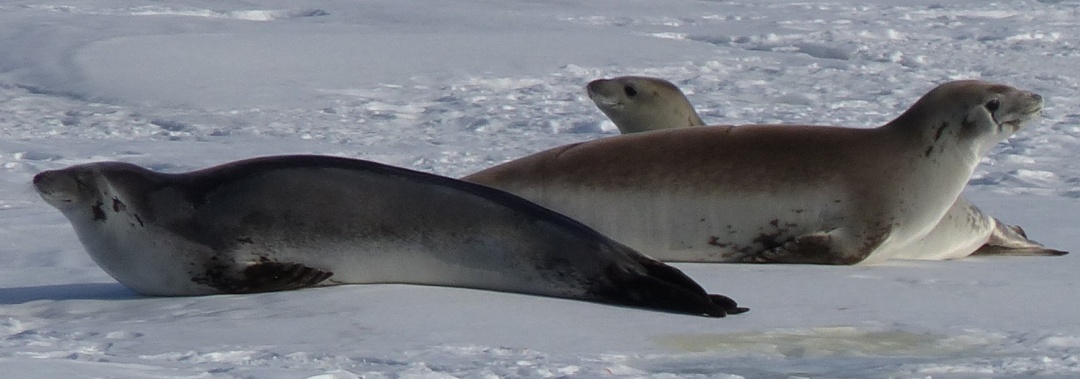
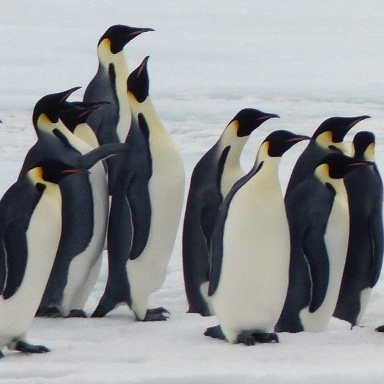
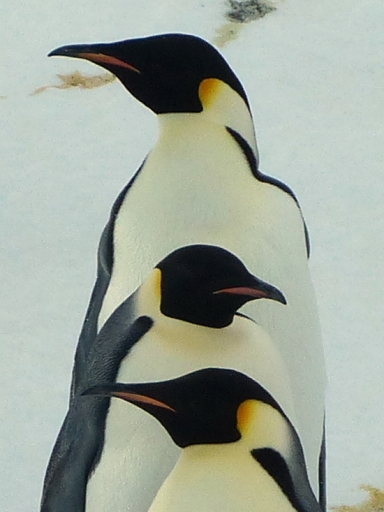
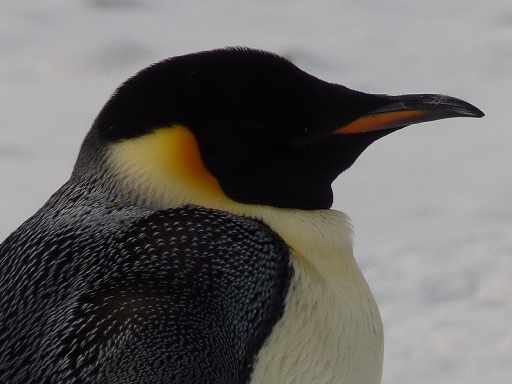
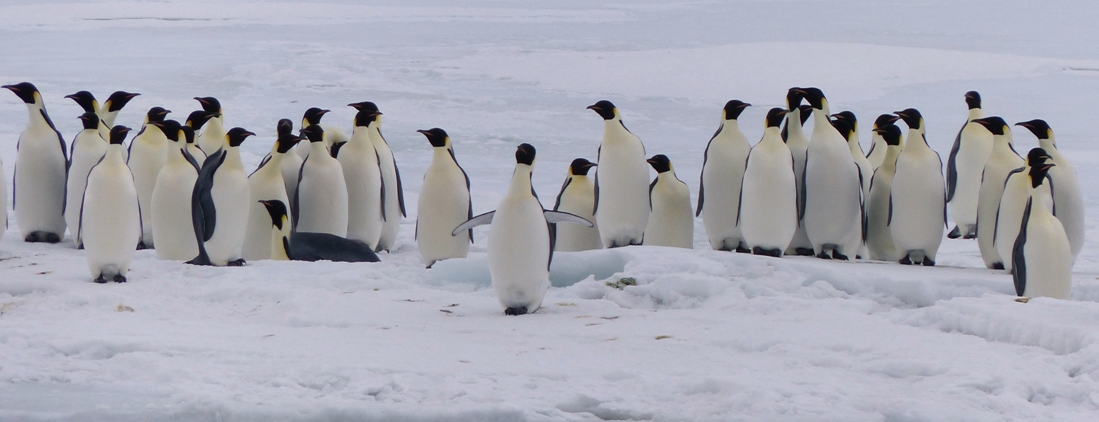
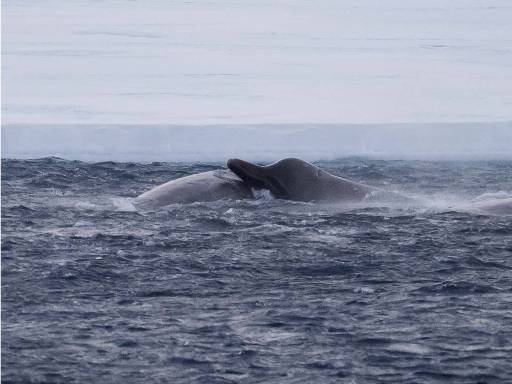
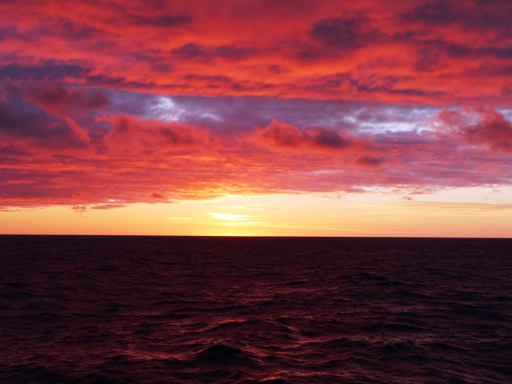
This video clip is the group of Arnoux's beaked whales
Days 21 and 22 - At sea
The EL was on the PA system early to announce our entry into the normally ice clogged channel between Coulman Island and the mountainous Borchgrevink Coast of the mainland – his first south-to-north transit of this passage in his many years of visiting the area. The day cooperated with sunshine and clear skies while we made our passage and continued north along the Victoria Land coast.
Today’s staff effort is
again in
the kitchen. I help to salvage 3 week old lettuce and greens. For the
second or
third time I get reminded not to whistle while I work – due to the
crews’
superstition about “whistling up a storm”. In the afternoon we learn
from a lecture about the history of whaling in the area - including
that fact that over 2 million whales were killed. Some species (e.g.
humpback) are recovering fairly well while others (e.g. Blue whales)
are not. I finally win at Oh
Hell.
More emperors, monochrome landscape - Coulman Island
Day 23 - Cape Adare
A perfect Antarctic day beckons us to land at Cape Adare. Borchgrevink’s Southern Cross Expedition hut is mostly empty as the artifacts are in Christchurch being conserved by the Heritage Trust. Nevertheless, the feeling of the history is strongly felt, as we see the 10 bunks of the first men to overwinter.
A group sets out to attempt the “walk” to Hansen’s grave at the top of the ridge. This soon turns into an icy scrambling climb, so, honouring the precedent set by Shackleton, the EL makes the difficult decision to turn back. We have a few moments to take in the superb views, then sidle and bum-slide our way down. We can only admire the pluck and skill of the penguins we see above us.
Cape Adare is truly superb. It is one of the most rugged and uniquely wild places I have ever visited – even without the penguin colony in action and the hut mostly empty.
The landing is moderately difficult – but I again dodge the waders by doing hut warden duty. This time it isn’t such a win as I have the job of scrubbing the accumulated guano of 500,000+ penguins from peoples’ boots before they can enter the hut. This in a temperature of just over freezing with everything getting a bit slushy. I end up covered in penguin poo splatter and wear my outer layer into the shower when we return to the ship.
Panorama of the Admiralty Range with Mt. Minto at the center. Historic huts from Borchgrevink's overwinter in 1899, boat left in storage hut. Drawing by original occupant over one of the bunks, Adelie moult. Overlook of the beach from the highest point of the climb.
In the afternoon, as we cruised the rugged coast of Sturge Island in the Balleny Islands group, two Humpbacks pay us a long and friendly visit. Then as we reach the north end of the island three more have chosen a spectacular setting by a grounded iceberg and rocky cliffs for their visit.
The humpbacks put on quite a show against a dramatic backdrop. The rest of the day is quiet with a bit of helping in the kitchen and regular cleaning up and refilling at the tea/coffee/soup/biscuits/cookies station in the lounge. This is my regular job so I end up cleaning ~20 stainless steel cups 3-4 times per day.
Humpback at the bow (photo credit: Olga?) , humpback flukes. Humpback snout(photo credit: Grisha?), humpbacks and berg(photo credit: Grisha?). Humpback in brash ice, PAX on the bow(photo credit: Olga?)
A video clip is here: Balleny Island humpback whales
On the Bridge I see a couple of birders comparing notes. One shows the other his database of bird species - a list country by country with 4 columns of numbers - for the endemic and visiting species that he has/hasn’t seen in each country. So, at a glance, he can tell you what percentage of the birds in that country, and thus the whole world he has seen. The whole bird ticklist culture is strange but seductive. One PAX on this trip has made the voyage primarily to see 3 birds. They all carry long lenses in order to confirm the species and take home the trophy photos. This is perhaps a bit harsh – and they do enjoy their shared obsession. I think that most of us would rather see a few animals closely with time to observe and enjoy – but confess that I am looking forward to ticking Chinstrap off my list of penguin species.
Day 25 - Balleny Islands
After a calm night in the lee of Buckle Island the day begins with a zodiac cruise out to Sabrina Island and the Monolith. There, amid the towering black rocky crags, the towering white icy crags and the crashing surf we approach the beach holding small groups of Chinstrap penguins. We are privileged to see them as the next nearest colony is thousands of miles away.
The remainder of a relatively lazy Sunday is spent cruising up the west coast of the Ballenys keeping watch on the Bridge for whales and seabirds, reading, relaxing in the lounge, or inspecting the inside of our eyelids. As we cross the Antarctic Circle, and thus leave the polar regions, it seems as though we have skipped the Southern Ocean and gone straight to the doldrums – so still is the sea.
A couple of photos from Grisha to demonstrate how calm the sea was: Minke whale and skipping bird of ?? species (and one of my favorites from the whole trip)
The evening jam session and sing-along in the dining room is starting to attract a bigger following.
I get my tick for “Chinnies” and have now seen 14 of the 18 penguin species – but don’t expect to be setting up a database by country anytime soon.
Chinstrap penguins, zodiac in the surf at Sabrina, Sabrina Island and the Monolith
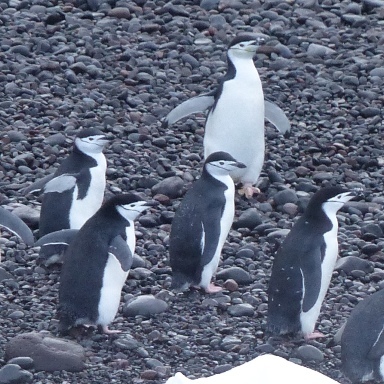
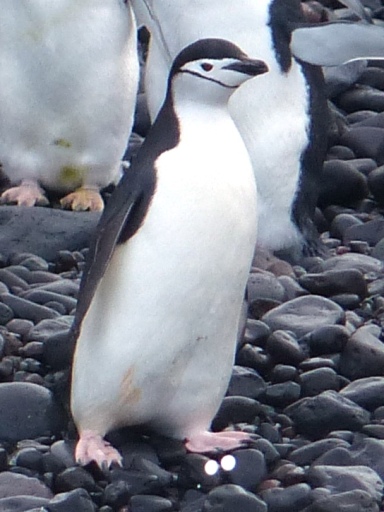
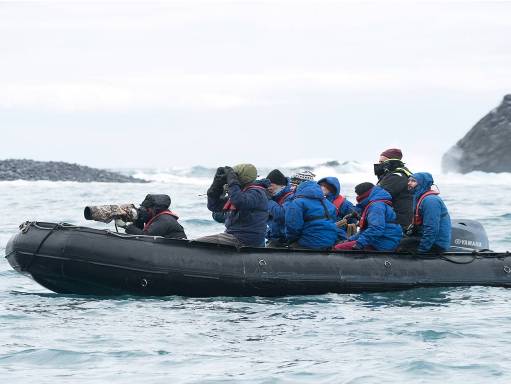
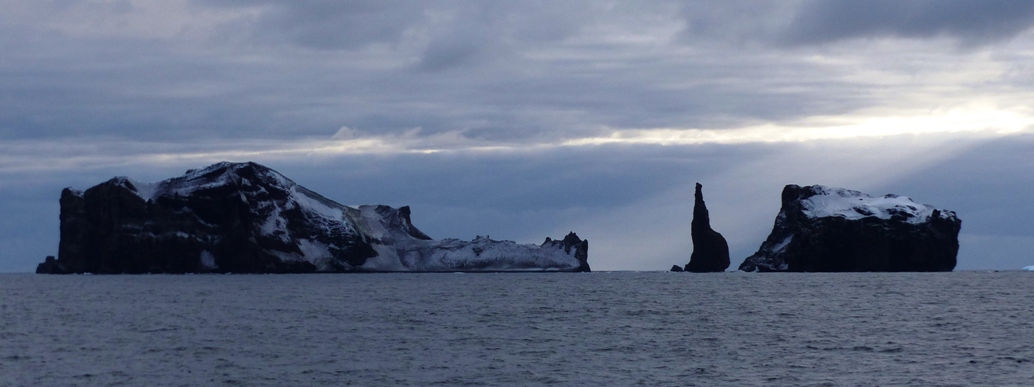
Day 26 to 28 - At sea
My final presentation goes well – my part being only to introduce and background oral histories of the Commonwealth Trans-Antarctic Expedition that I had prepared for the Antarctic Society some time ago. I am looking forward to getting a chance for a walk in the country - and a few more options than cabin, lounge and Bridge.
I hear rumours of an upcoming “Entertainment Evening” organized by the PAX. I put some time into writing haiku in preparation – and also as a good way to reflect on the recent past. While not sick I decide that eating is a bad strategy so skip dinner and have a huge sleep. These long days at sea are the price to be paid for getting where we have gone – but are tedious. I know that we will all be glad to reach Campbell Island – then home.
I have joined the birders and spend plenty of time watching the soaring albatross from the back deck. Also plenty of challenge in getting a decently focused photo. My hit rate is about 1 in 20. Good thing it is pixels and not film.
A selection of seabirds. Campbell Island albatross, Campbell Island cormorant. A pair of southern royal albatross. Southern royal albatross, white capped albatross.
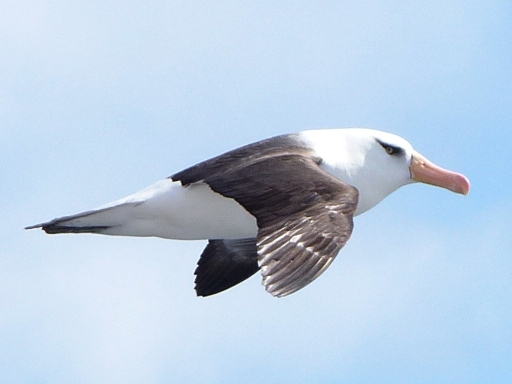
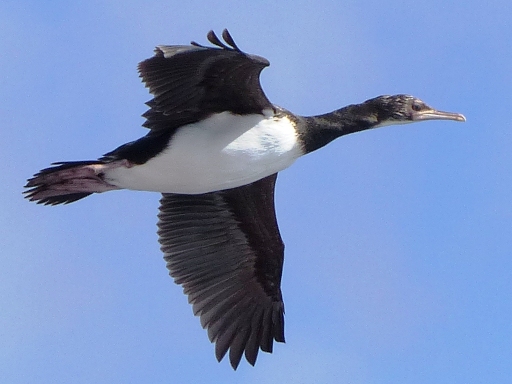
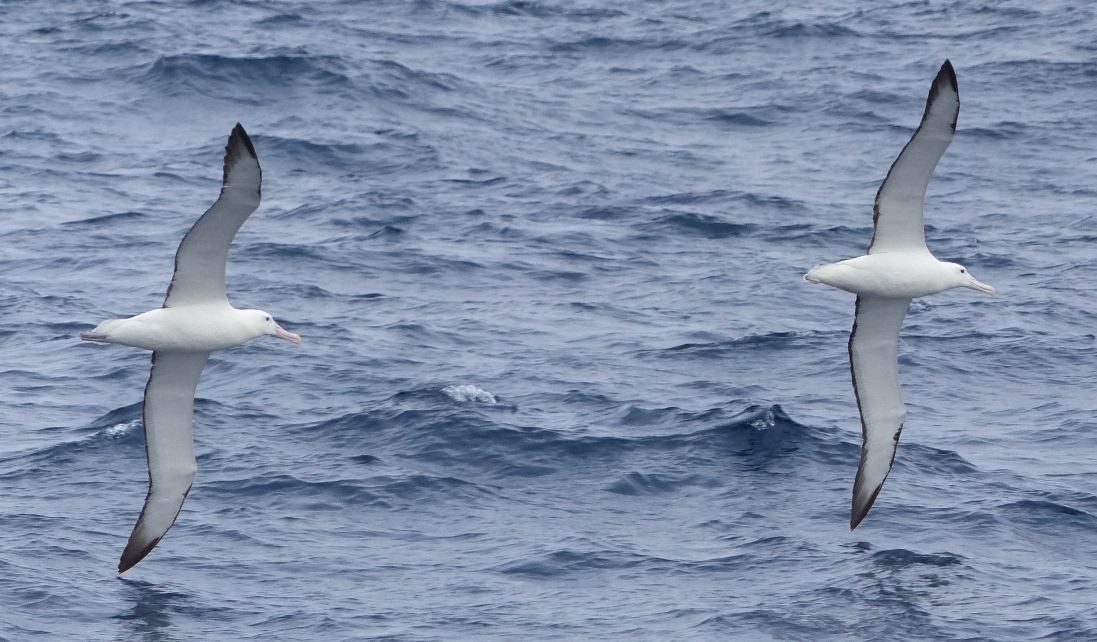
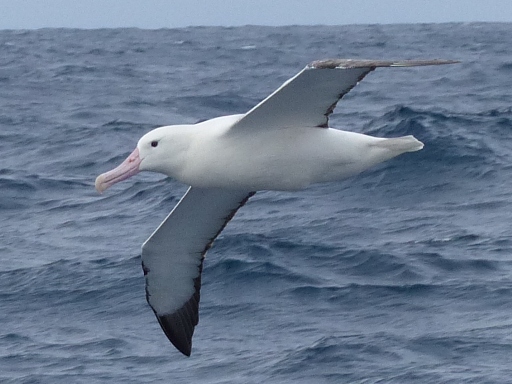
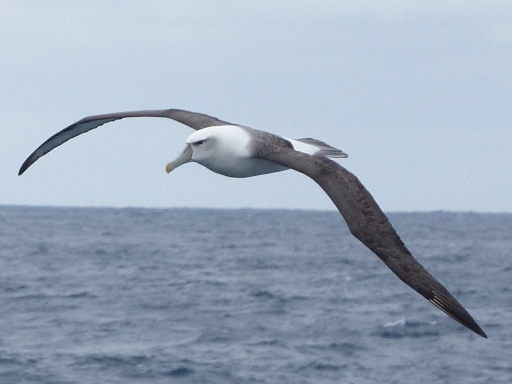
Day 29 - Campbell Island
The temperature is steadily climbing with 9°C (48°F) announced on the wake-up call. The approach to Campbell Island shows us the rocky cliffs and tussock covered hills – but doesn’t really prepare us for the spectacle of the afternoon zodiac ride. On it we see the true nature of the coastline - caves and caverns in the strangely eroded volcanic columns dripping with moss covered misty waterfalls. The fur seals on the rocks and in the sea are playful but the birds take most of our attention. We have Rockhoppers and a single Erect Crested penguin; cormorants; terns; gulls; pipits; and Light Mantled Sooty albatrosses with those on the shore calling out to those riding the waves in the sky.
When we come around the corner into Perseverance Harbour the view out the windows/portholes is of land, albeit misty land, the sea is flat, and the birds are everywhere.
The sighting of the single Erect Crested penguin brings my species count to 15 of 18 (but who’s counting?). The cruise is indeed full of strange landscapes and the soaring, calling albatross are a real highlight. I look forward to not being rocked to sleep tonight.
Basalt columns. Erect crested penguin (photo credit Chris?), Light mantled sooty albatross in flight and in the tussock. Antarctic tern, sooty shearwaters taking flight from the harbour.

Days 30 and 31 - Campbell Island
I go with the group to climb Mt. Honey (569m/1897ft) The slippery mud on the track and the steepening tussock and gravel make us earn the summit – but the clouds stay away and everyone enjoys the chance to stretch their legs. The walk shows the size and diversity of terrain on this island, giving renewed admiration for the effort made to eradicate the introduced pests. We certainly cross plenty of places where a rat could hide and getting poison to penetrate would be difficult. Well done them.
I also help guide the zodiac cruise around the upper harbour which is excellent fun. The sea lions are curious and followed us around from landing to landing – playing all the while. At the landings we see the site of the old farmhouse, and the loneliest tree in the world.
The old farmhose stove, Sea lions at play (photo credit: Grisha via GoPro)
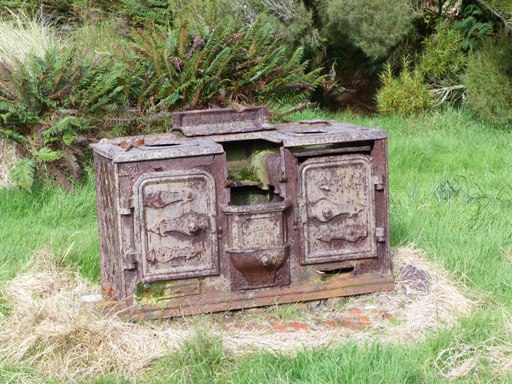
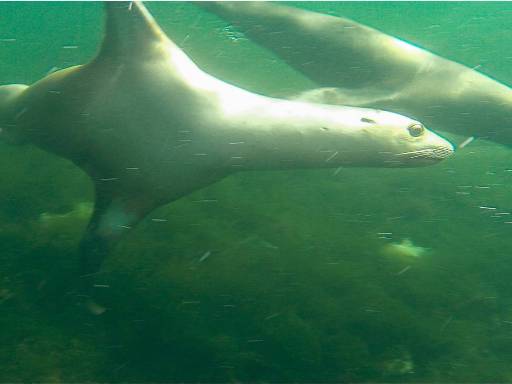
"Gaming" southern royal albatross - in which the young birds practice for future mating dances. Coming in to land. Front view, chick on nest, feeding.
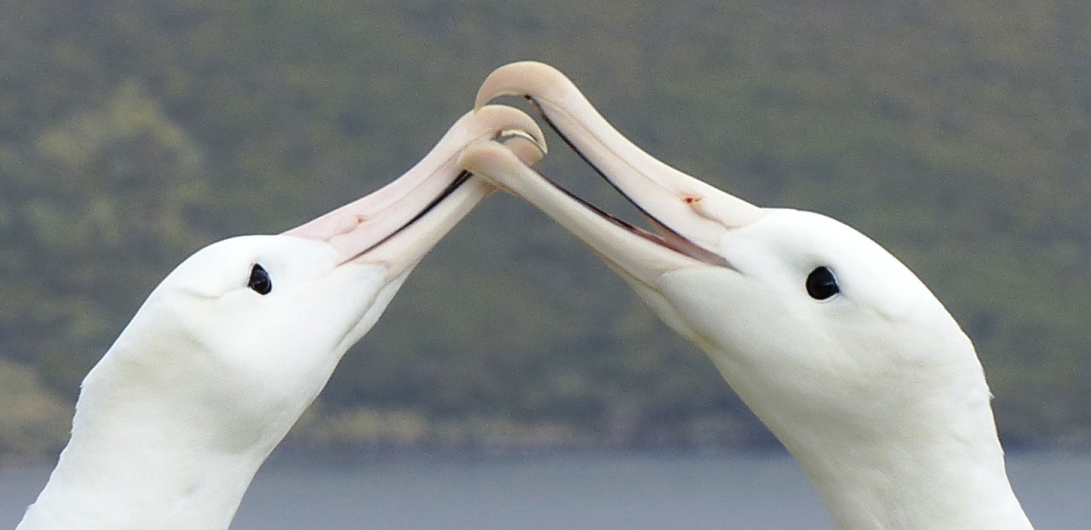
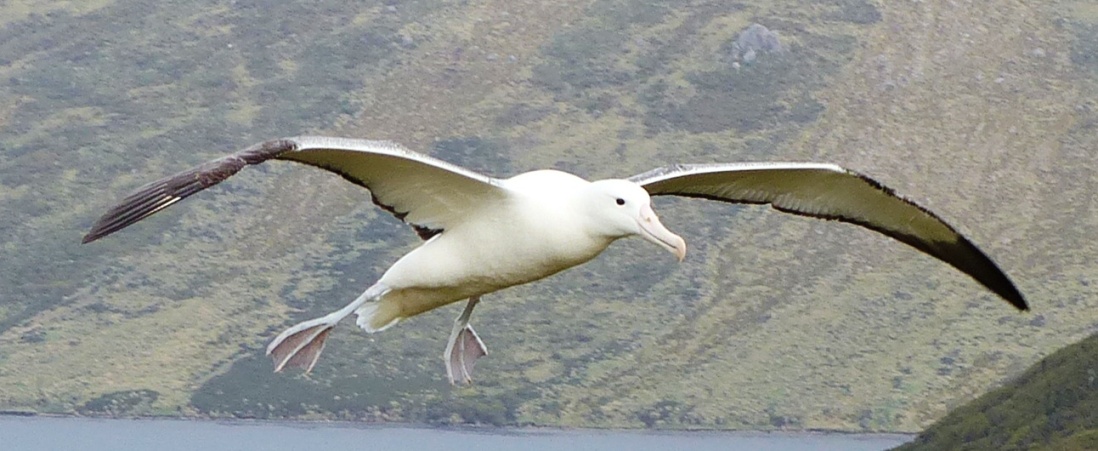
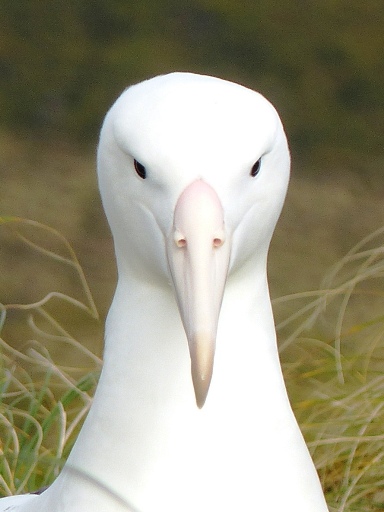
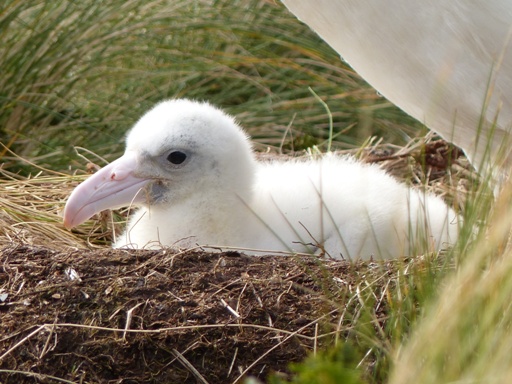
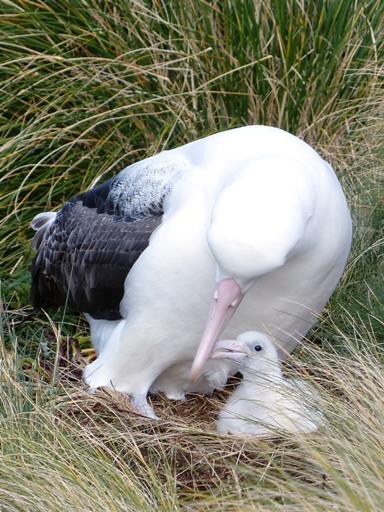
For a video clip see: Southern Royal albatross gaming
Days 32 to 35 - At sea, Akaroa and home
We are thankful to spend our last evening in the quiet waters of the Akaroa harbour surrounded by the green hills of the Banks Peninsula. But, it is something of a shock to see people walking the passageways or standing on the Bridge with their eyes glued to their phones.
The morning brings a bittersweet end to the expedition. We are sorry to be leaving new friends, but looking forward to catching up with old friends and family.
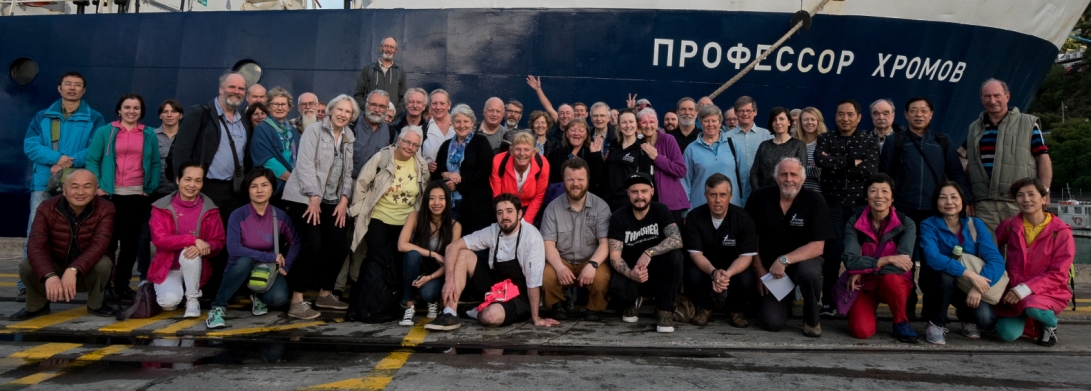
So - well done for making it to the end. I hope that you enjoyed the journey. Naturally if you have any comments or questions please get in touch.
